fall inside a hole
 |
Bandai Mini Mini Rail trains
Bandai produced and sold the Mini Mini Rail (ミニミニレール) series of train toys in Japan from 1974 until around 1982. The trains are about the same size as N scale trains and run on rails 10.5mm apart, slightly wider than N scale's 9mm. For the first year or so all trains had a simple on-off gearbox, but starting in 1976 most of the range was updated to the reversing Action Series that also added an electrical cutoff switch. In the later 1970s the reversing chassis was redesigned to use a single AA battery instead of two N size batteries. Mini Mini Rail trains are typically three-car sets, with the motor and batteries located either in the locomotive or the intermediate car of the train. They use pin-style couplings which are easiest to assemble by putting down the locomotive or lead car and then adding more cars onto the end. All of the non-steam locomotive trains are designed to use the same chassis, with the longer unpowered intermediate and tail cars using a dummy chassis with the same footprint. Many toolings were reused with different plastic and paint colors to represent different trains and liveries as well as colors of freight cars.
Mini Mini Rail sets are covered on the main Mini Mini Rail page, and rail and accessories are covered on the Mini Mini Rail rail page.
Original Mini Mini Rail Series (1974-1975)
The original Mini Mini Rail trains ran on a non-reversing chassis that took two N size batteries. These trains were released in a series of different sets and reuse chassis components across trains. The original trains plus the later EF-65 were also sold in cardboard boxes.
Hikari Shinkansen (1974)


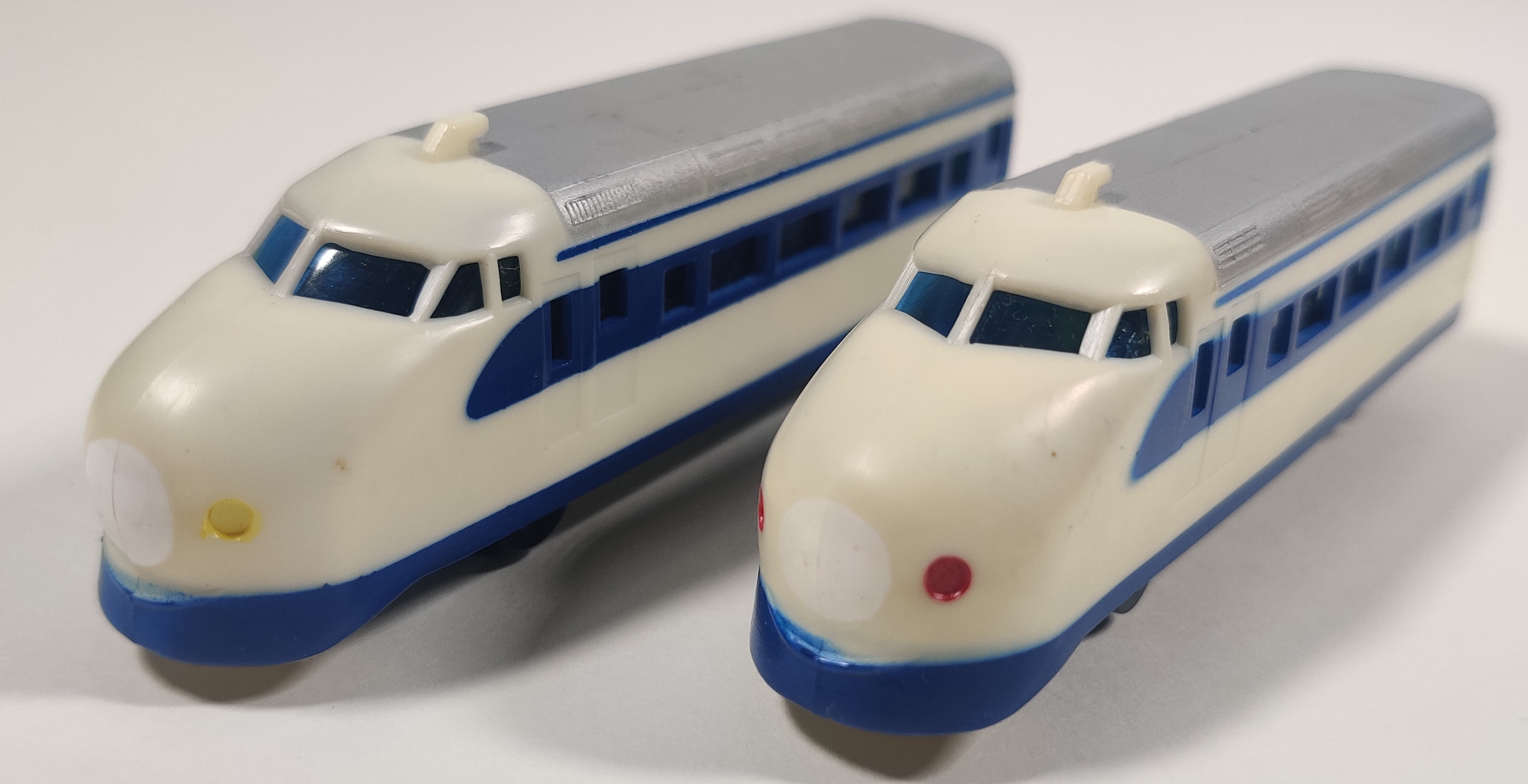
The initial lineup included, of course, the 0 series Hikari Shinkansen. The original trains were simply on-off with a metal power switch protruding out the side. Two N-size batteries are held in with the help of a plastic clip. The Hikari has head and tail lights.
The Hikari reappeared in the later eras - the early Action Series Hikari has the power car still in the front car, with a plated version also appearing on individual carded releases, and the later Action Series train moved the power chasses to the intermediate car.
D-51 Steam Locomotive (1974)
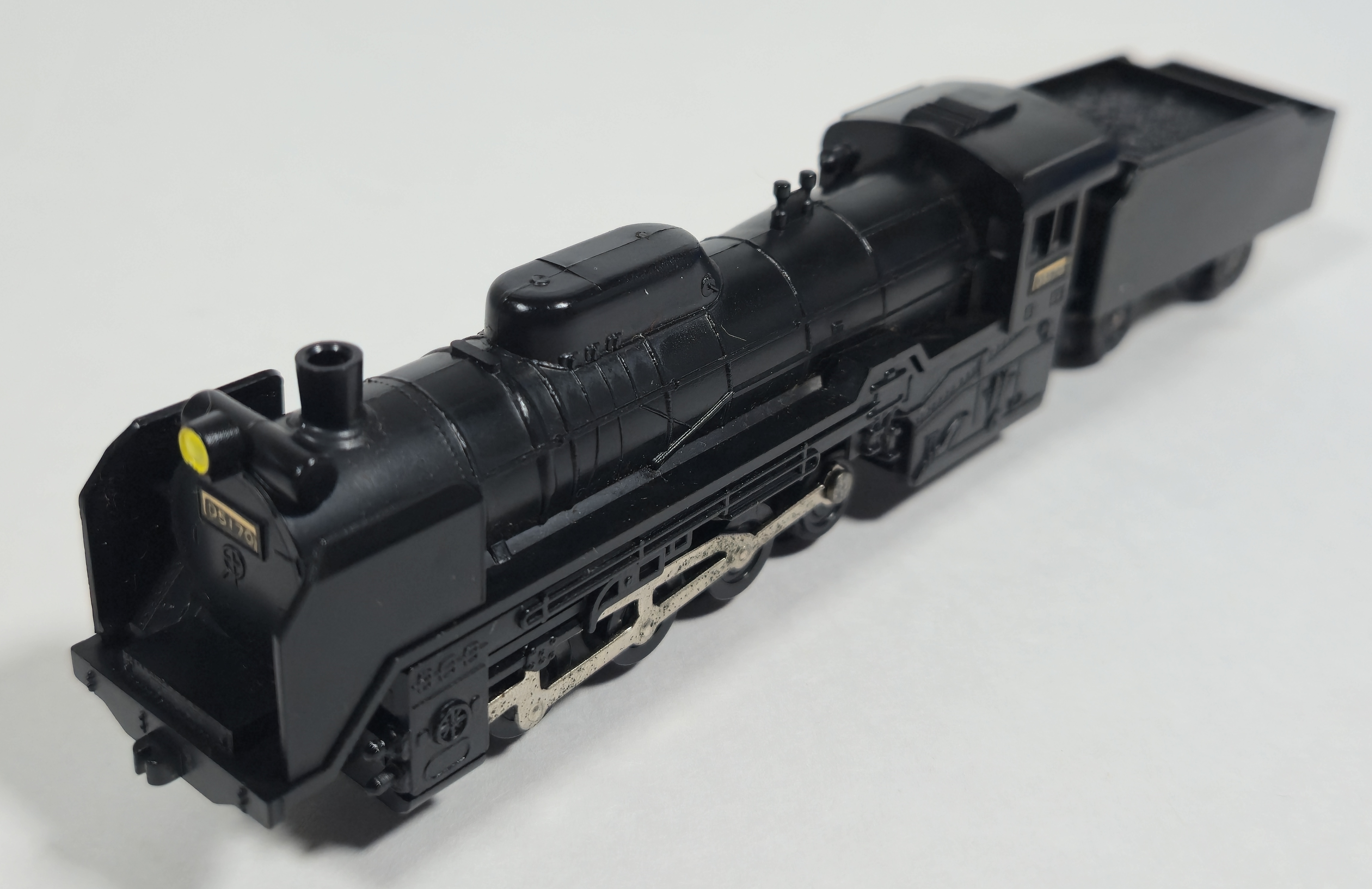
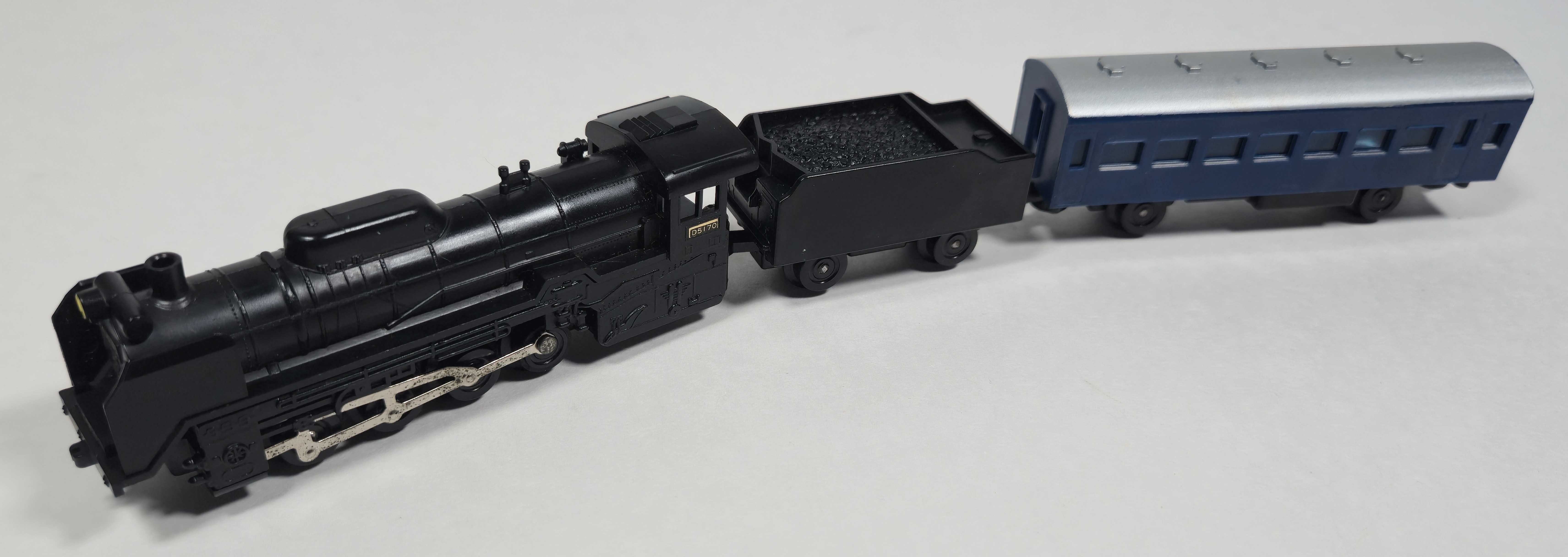
The original Mini Mini Rail steam locomotive, the D-51, used its own chassis with the same motor and worm drive system driving the rear wheels. The side rods are a stamped piece of metal and the other three pairs of wheels are unpowered.
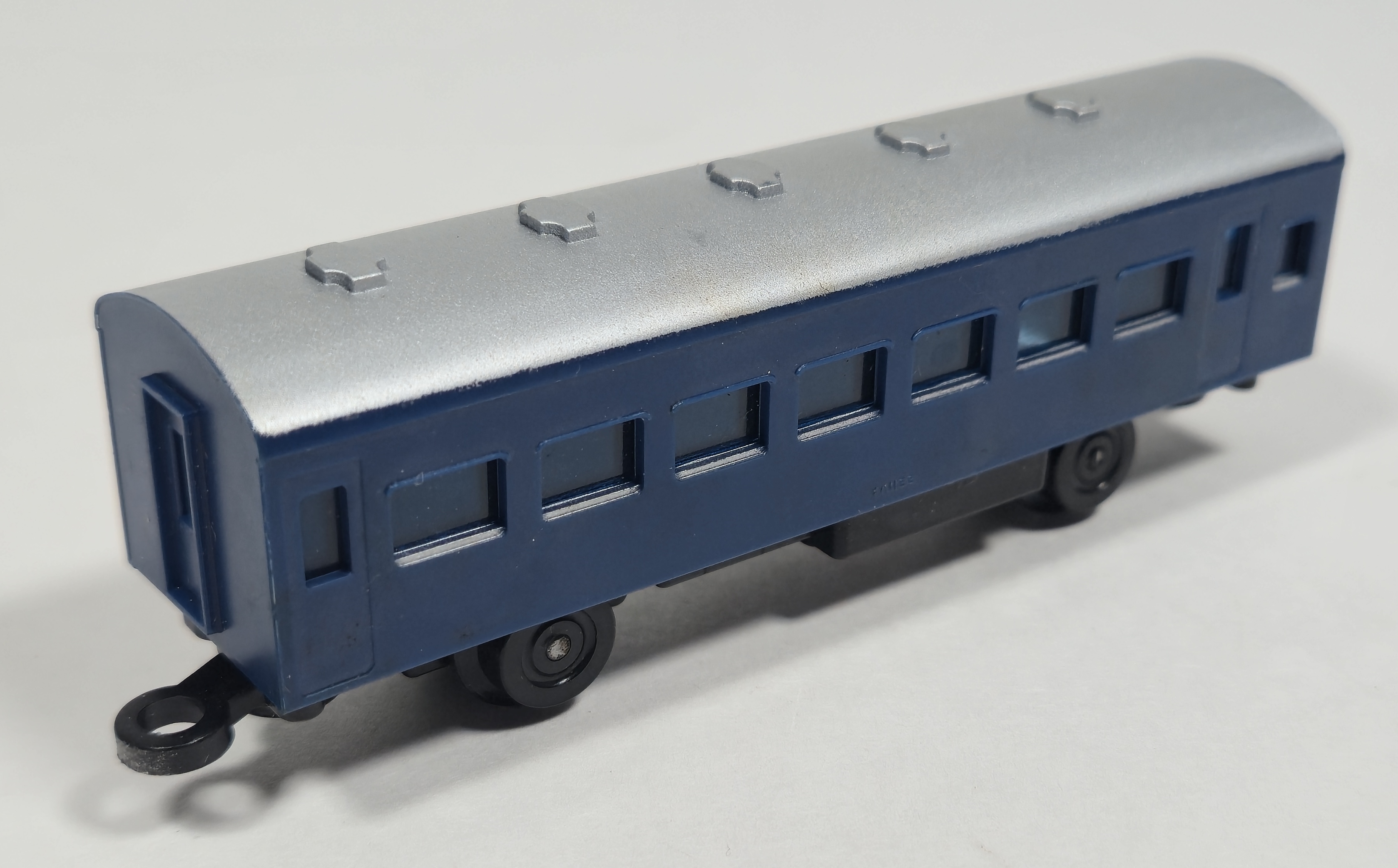
In addition to being sold with a 10 series coach, the D-51 was also sold with freight cars when a few additional types were developed in the later pre-Action Series era. The D-51 was sold into the early Action Series era until the new C-62 tooling was produced for the later Action Series.
National Railways Train (1974)



Produced in four different colors was the JNR 103 series train, appearing in sets and cardboard box individual releases. In addition to the green shown above, there was also orange, yellow, and blue. These trains as well as a plated new train version appeared in the early Action Series.

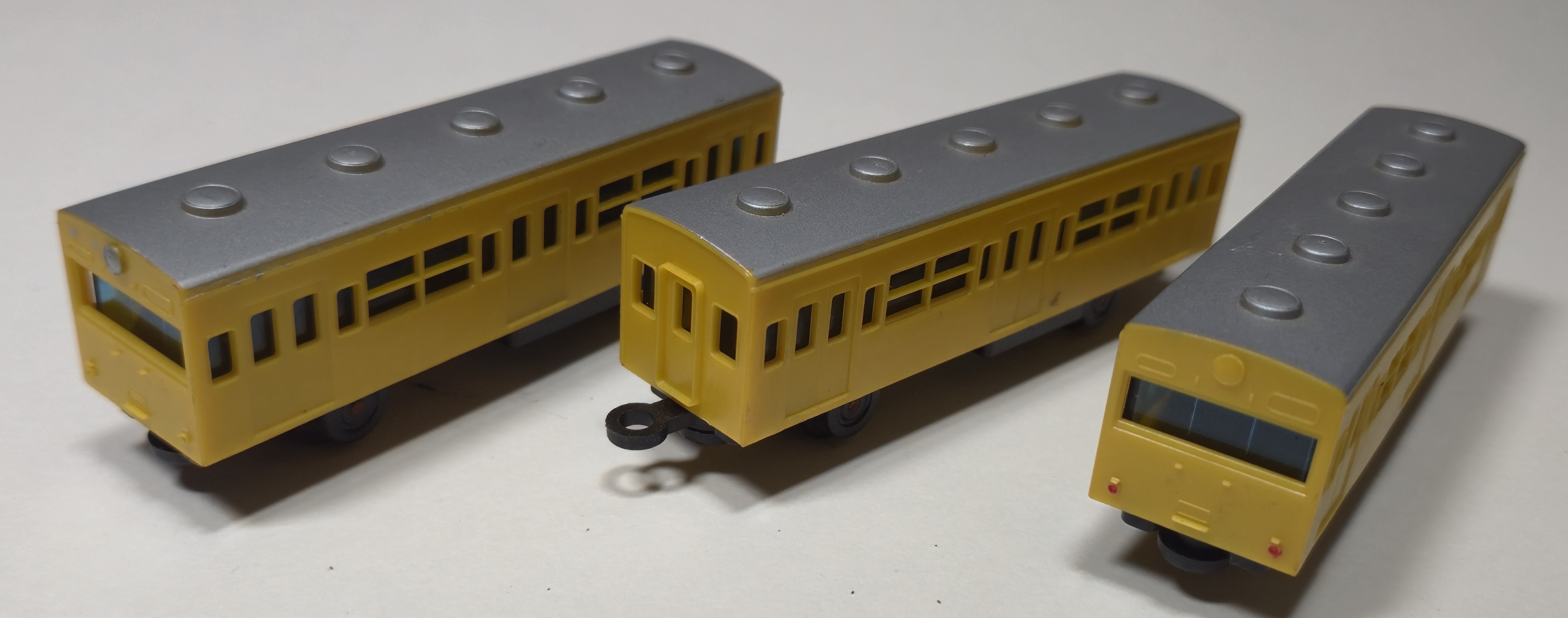
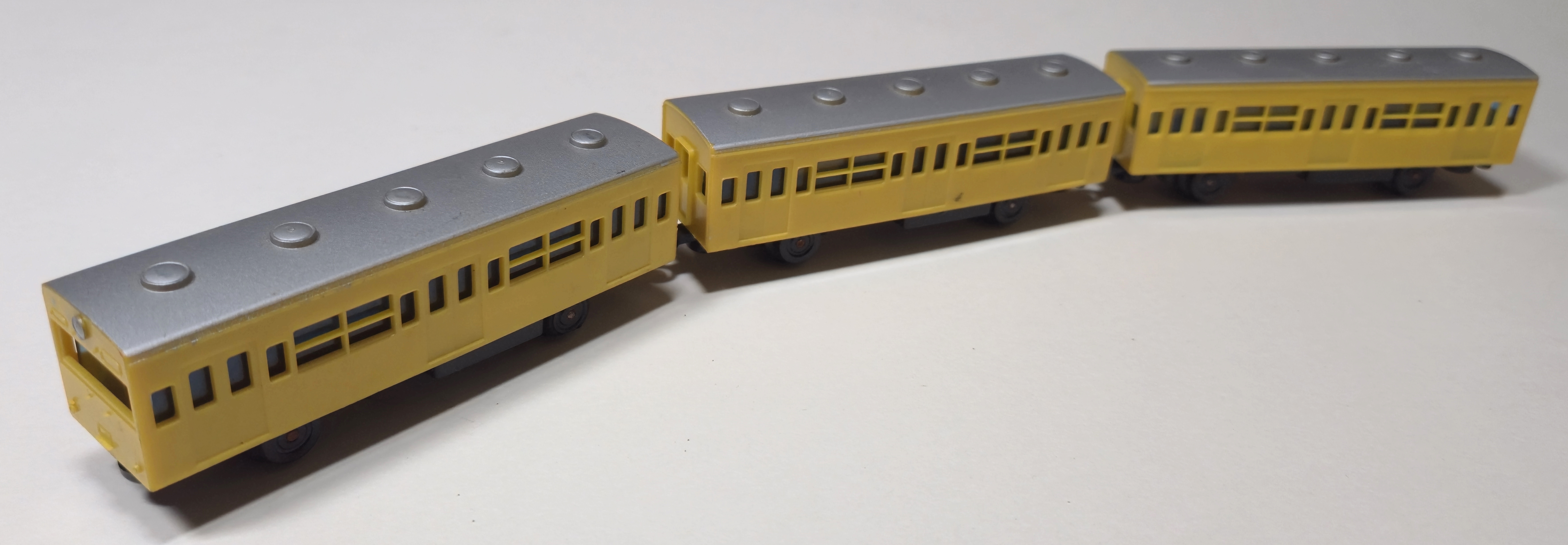
Here is the yellow 103 series from the original forwards-only era. The front cars have silver headlights and the rear have red tail lights, with the intermediate cars having corridor doors on the ends. The later reversing types have car numbers printed on the sides.
D-51 Locomotive Freight Train (later 1975)
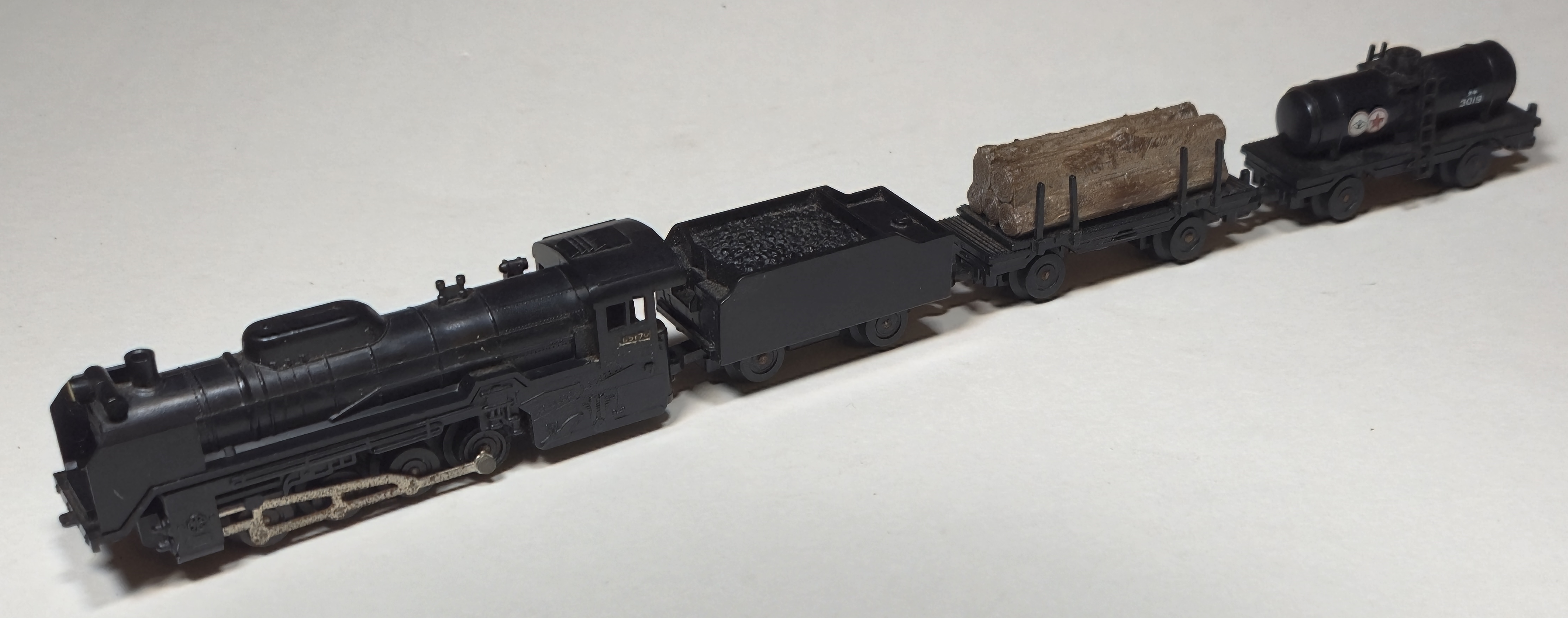
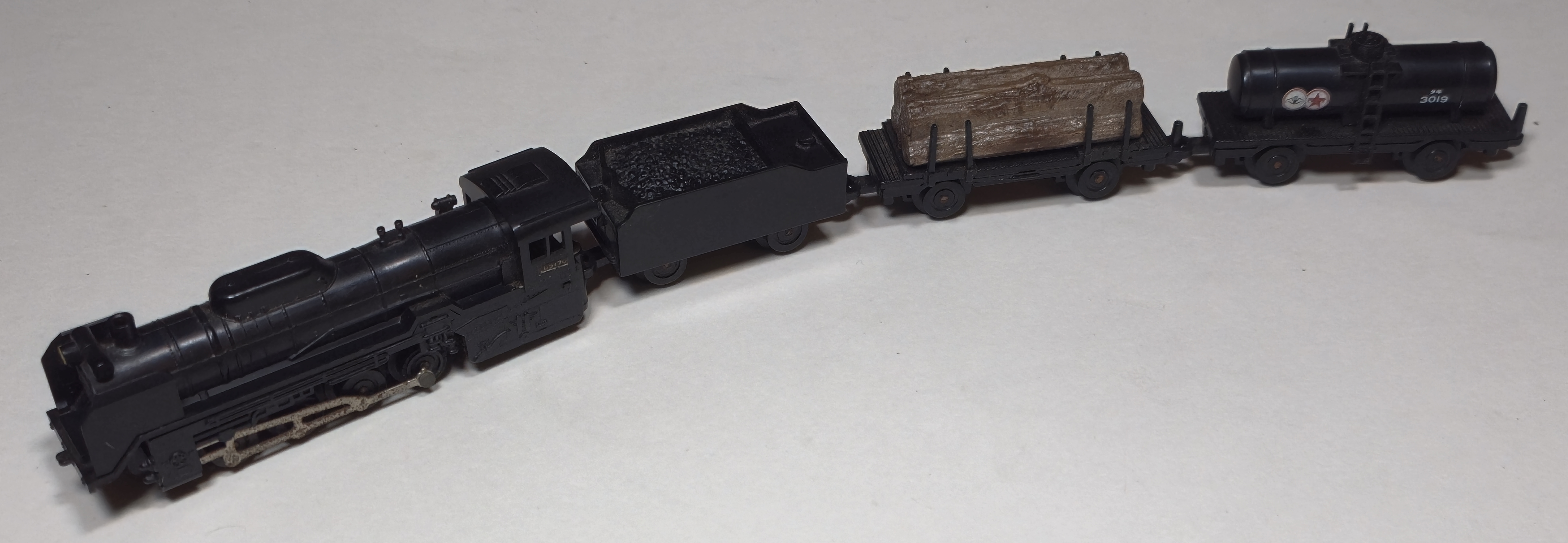
Appearing around the same time as the EF-65 freight train by August 1975 was the D-51 steam locomotive with some of the new freight cars for the range - a tanker car and a log car with logs.
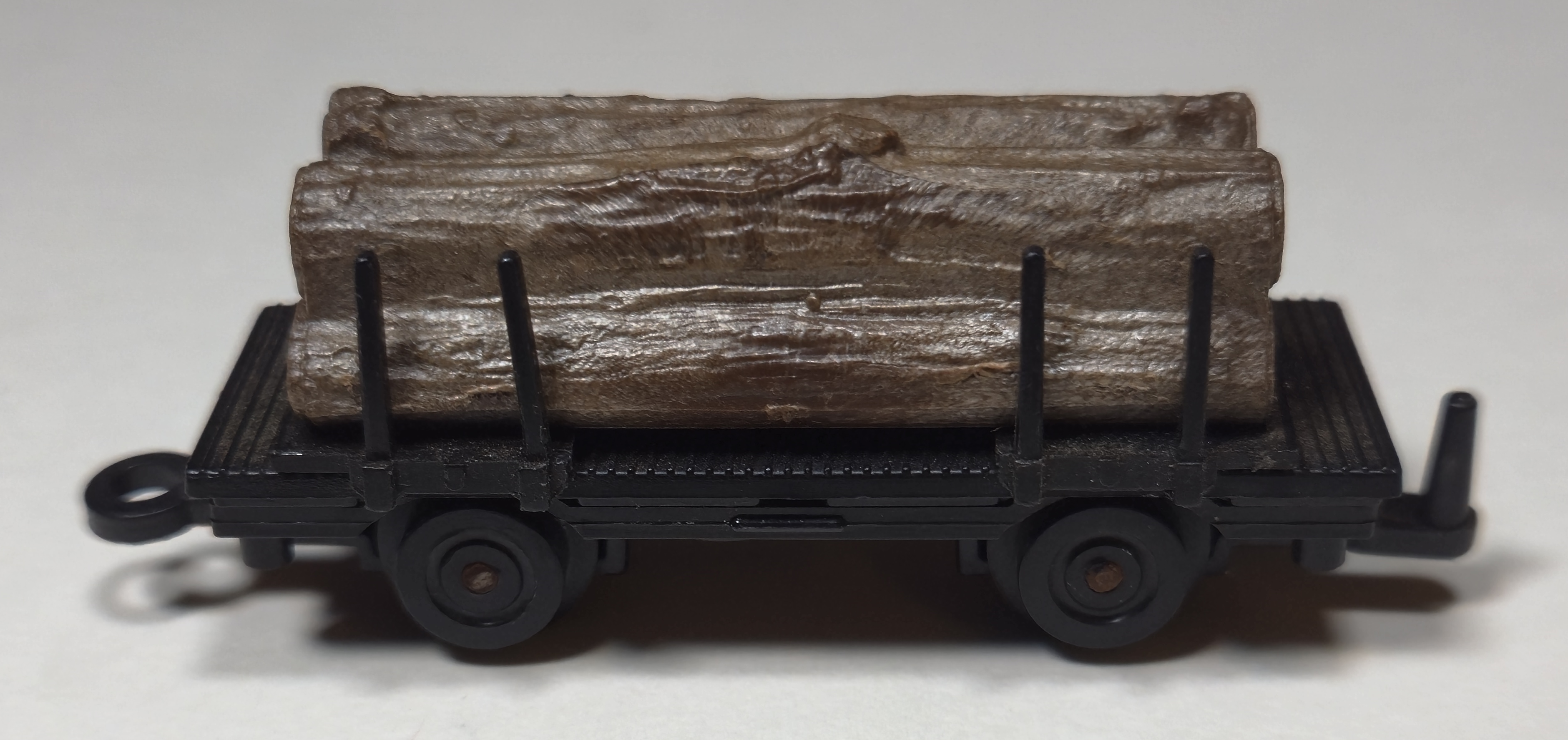
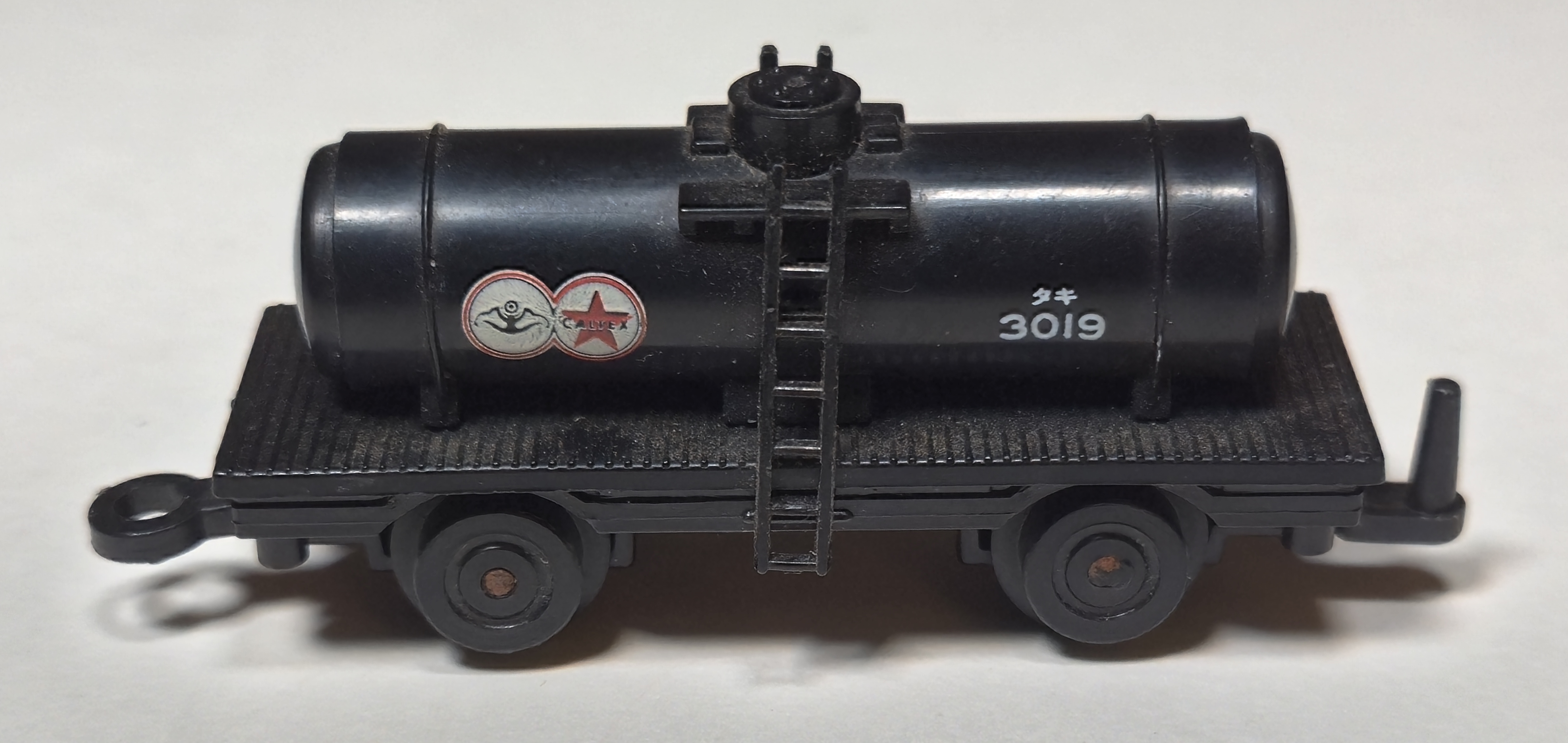
The log car's stakes are rubbery and bend, and the tanker has some nice printing. The logs are affixed to the flatbed and are not removable.
EF-65 Freight Train (later 1975)

The first new train introduced for the series was the EF-65 Freight Train, which appeared by August 1975 as an individual boxed release at the end of the original era.
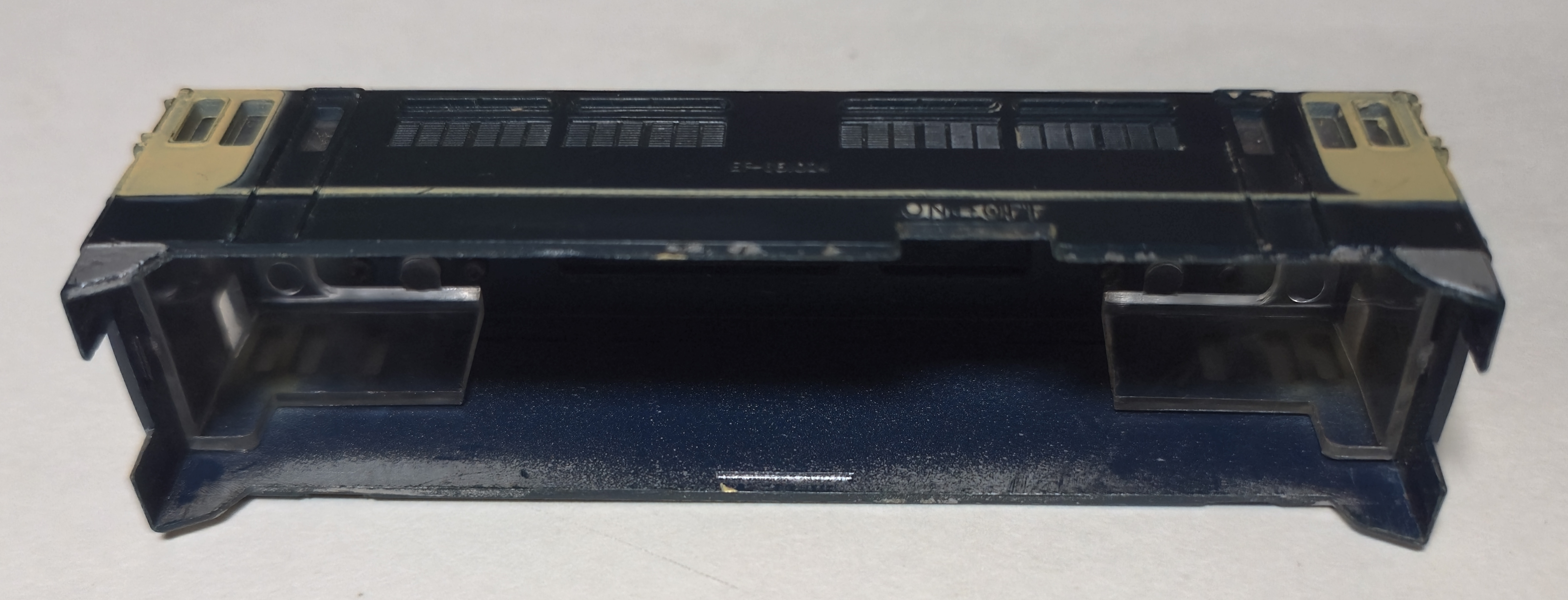
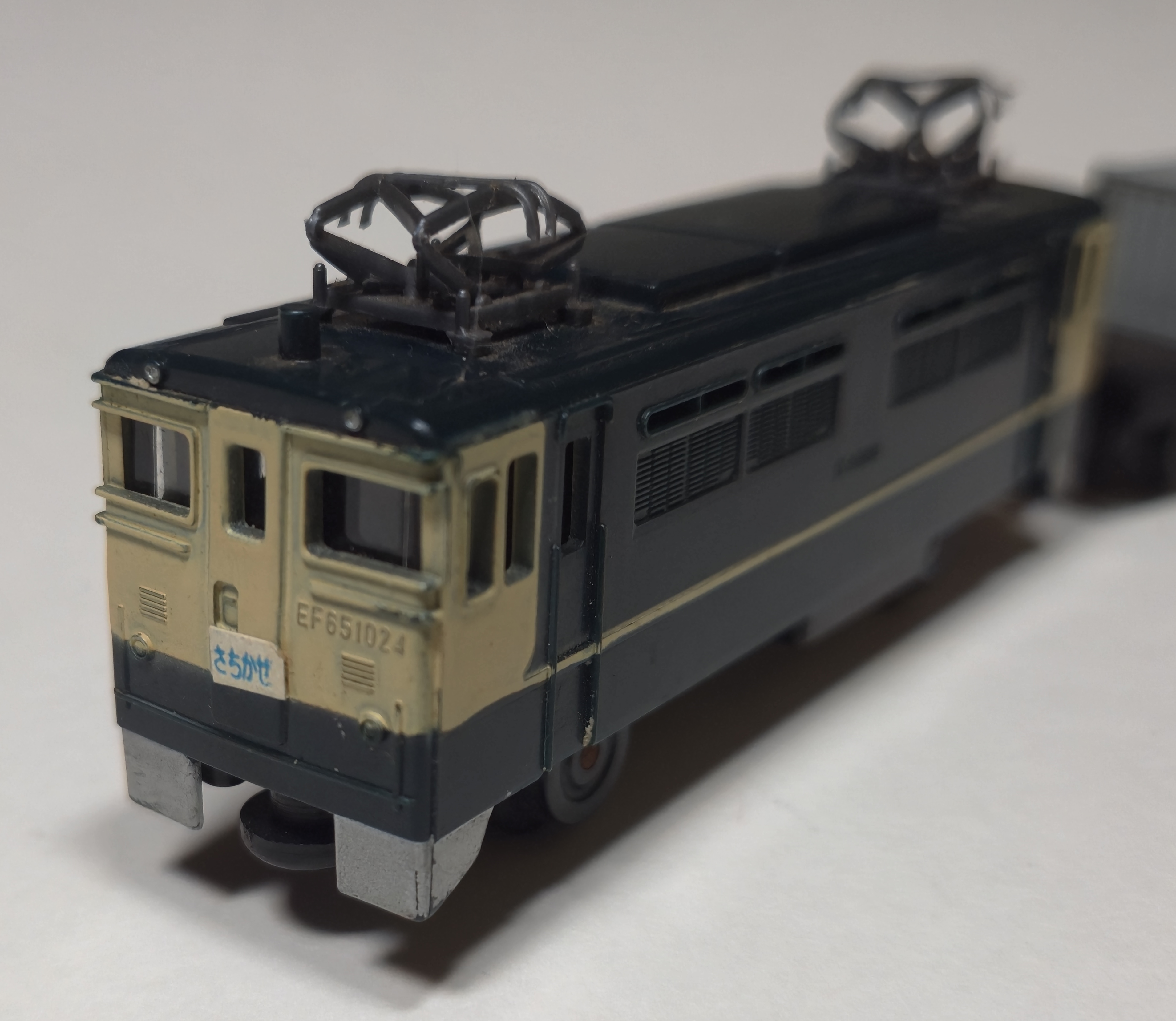
This earlier release seems to have darkened with age, perhaps with heat or smoke exposure, but it is also what appears to be the original tooling type with raised running numbers. It is number EF 65 1024, one lower than the later printed type. This particular one has a さちかぜ Sachikaze headmark sticker, the name considered for some 485 series trains circa 1975 which was included on the sticker sheet for Action Series 485 series trains.
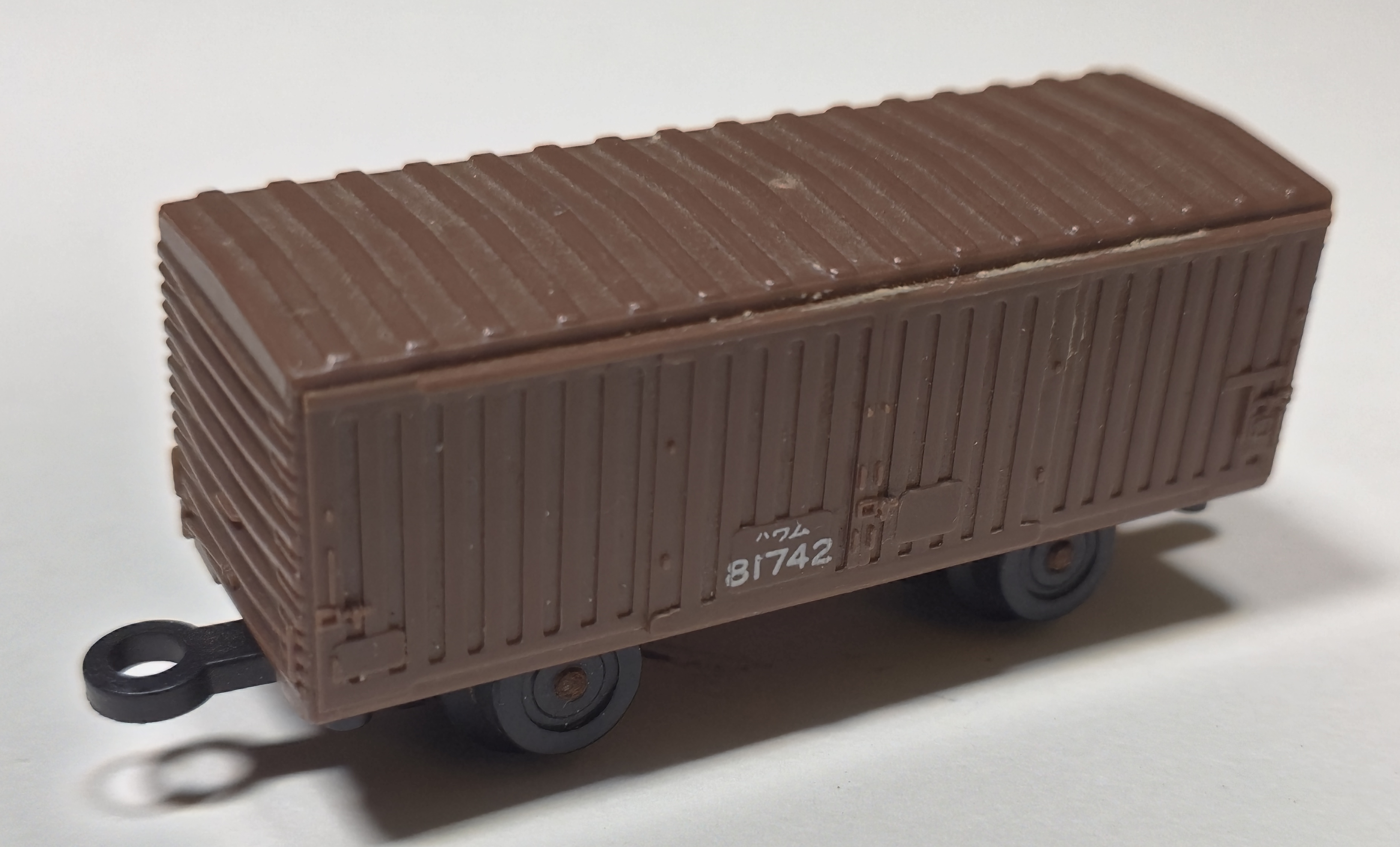
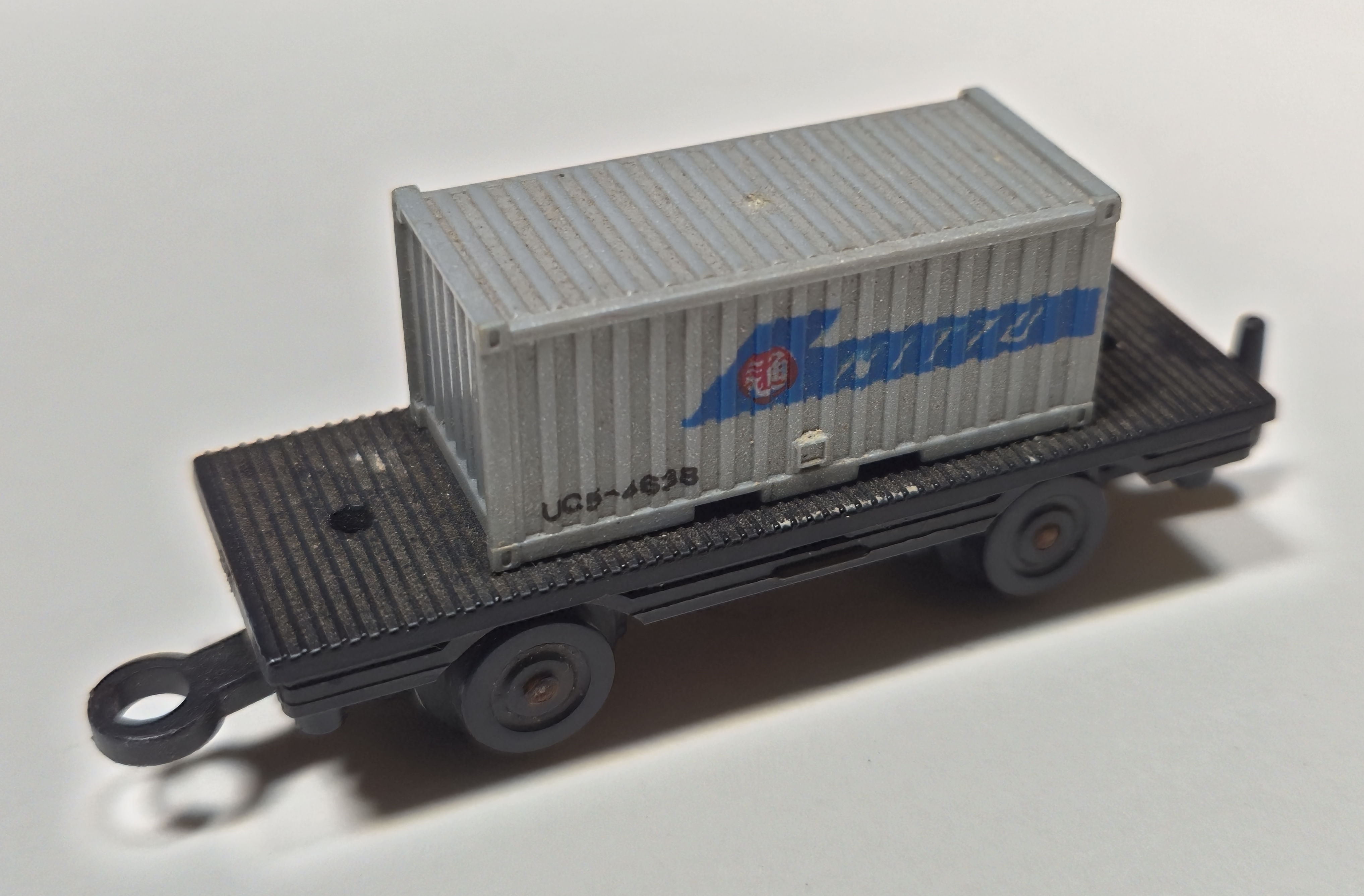
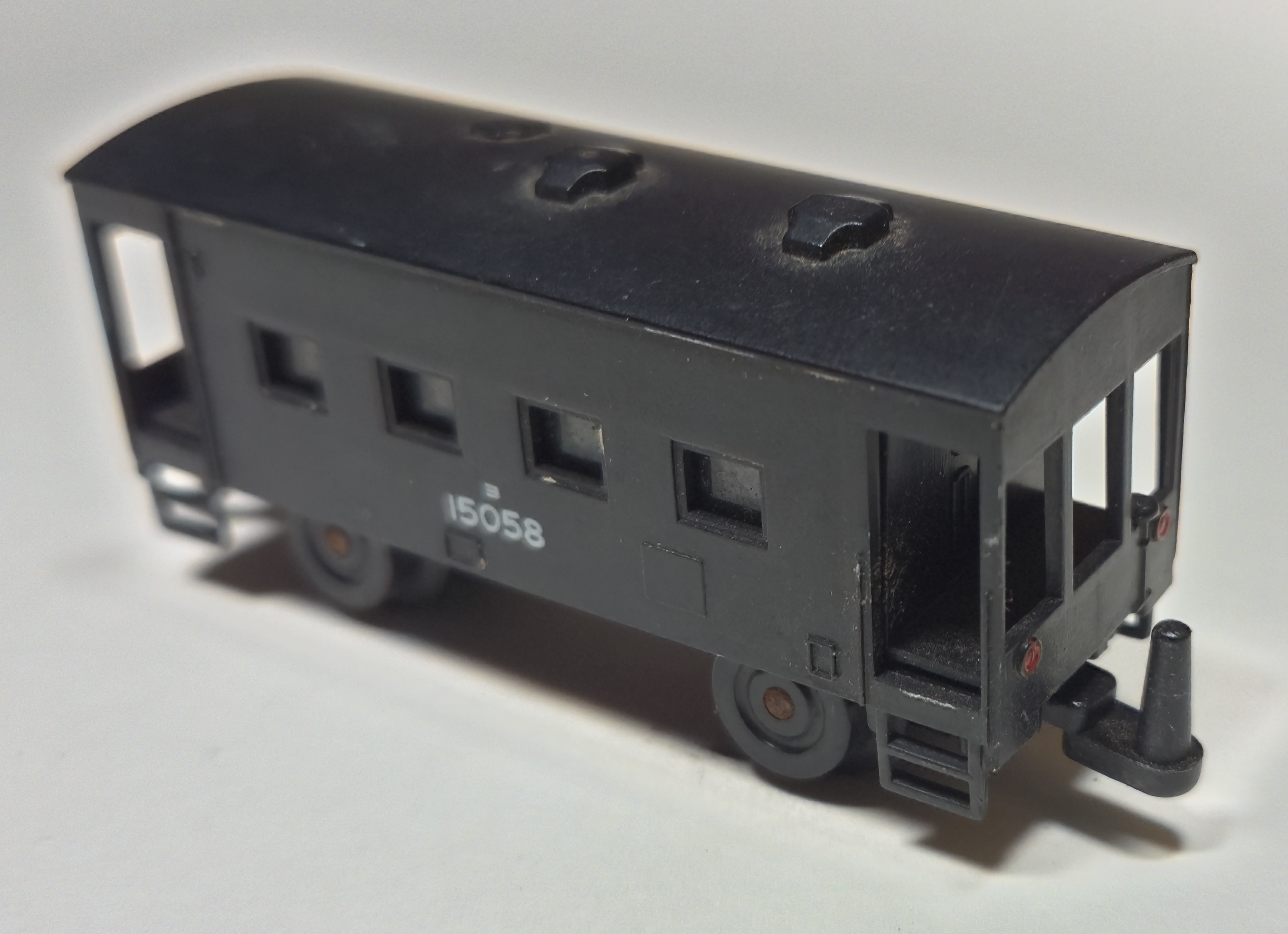
The freight cars that came with this EF-65 also feel slightly different from the later ones, like they are made from a different more fragile and less soft type of plastic.

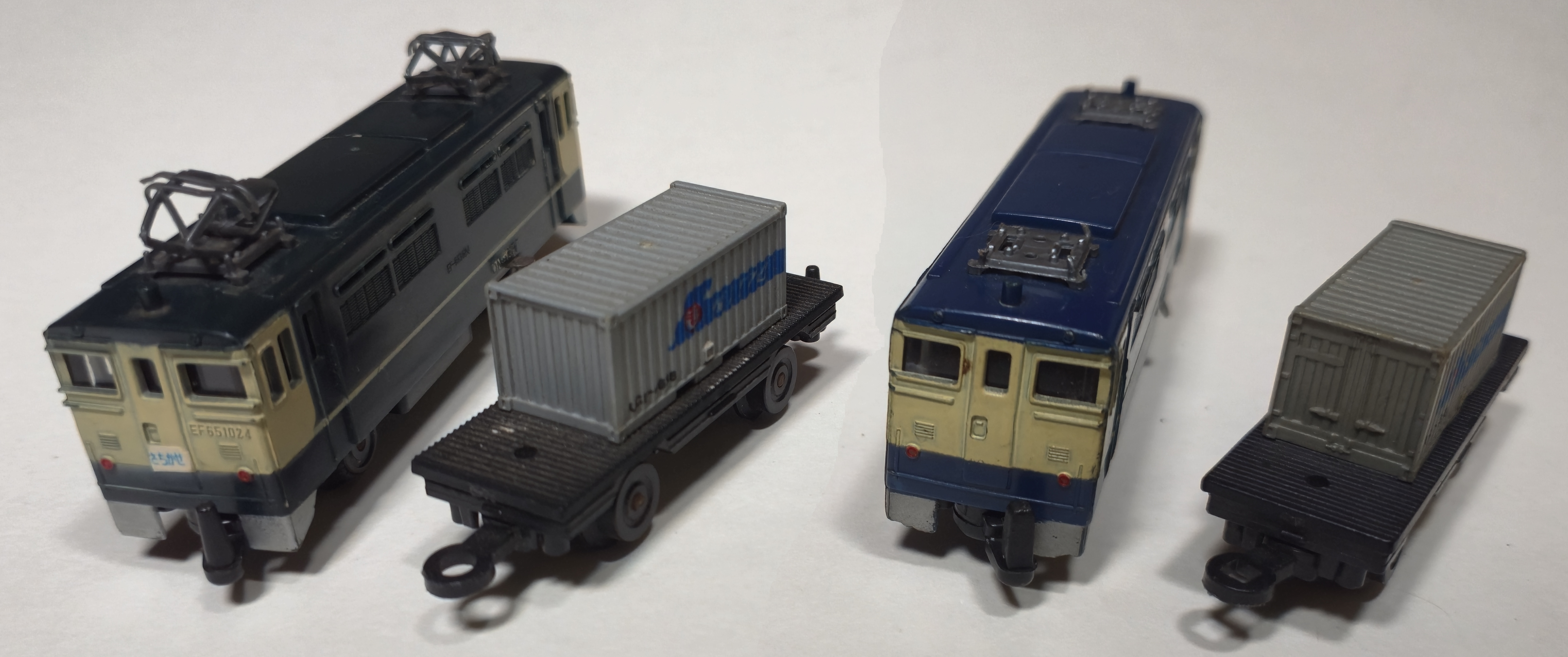
I have a later example of the single-direction EF-65 locomotive where the number in the tooling was flattened out and replaced with printing, but it it missing its pantographs and only has the original container car... It uses the later style of square couplers, and the container car has the container installed the other way around. This EF-65 likely dates to the very late unidirectional era or the very early Action Series era. The EF-65 was carried forward into the Action Series and reappeared with freight and passenger cars.
Early Action Series Mini Mini Rail trains (1976-1977)
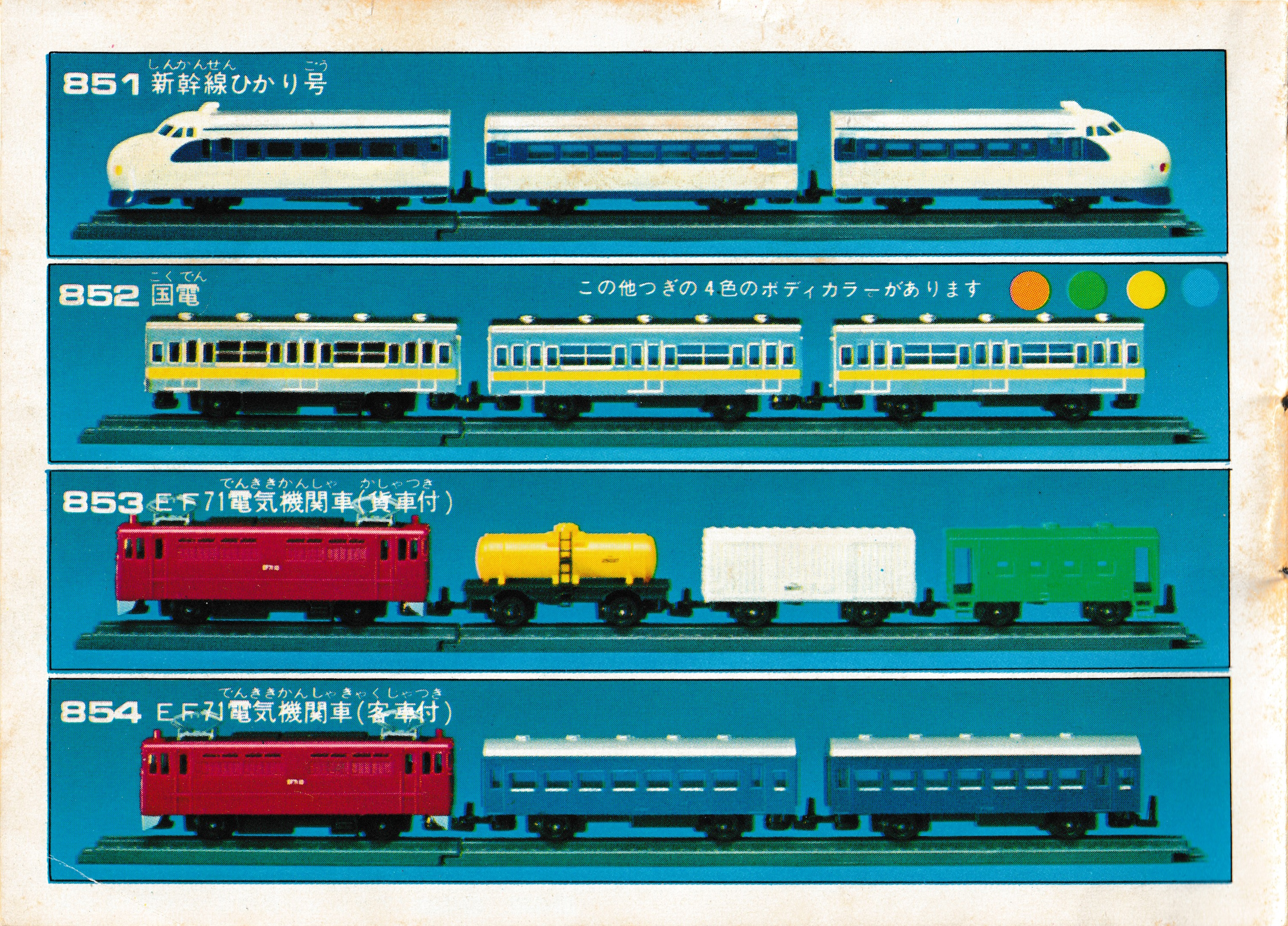
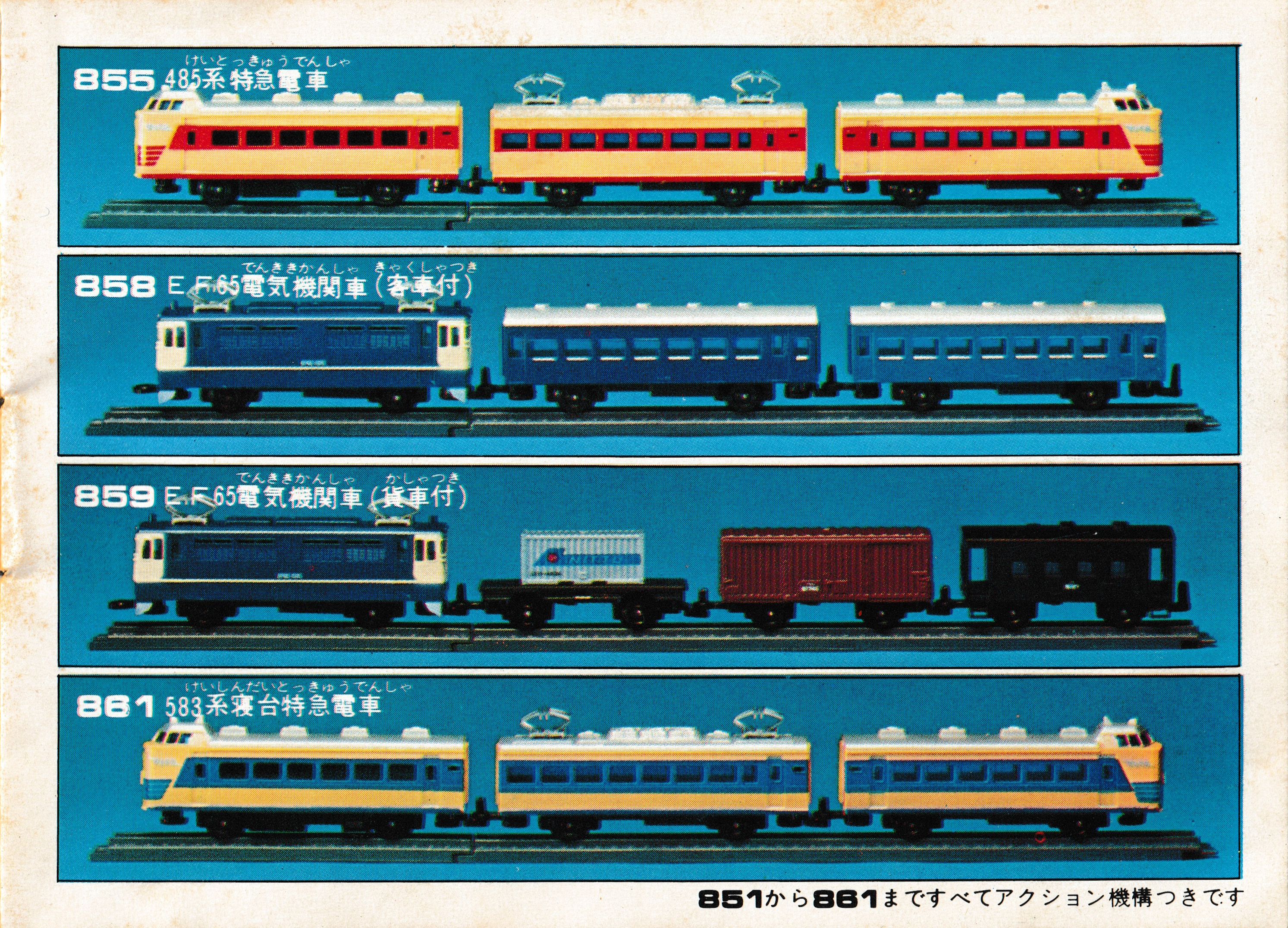
The first reversing Action Series chassis was based on the original with the new reversing switch sticking out towards the front of the left side of the train or carriage like the power switch of the original trains. The original series, sold as the "Action Serise" (sic), appeared in sets as well as green-card-back blisters. Later, the early two-N battery chassis trains were sold on orange cards. The old non-Action-Series D-51 trains were still sold into this earlier era before the C-62 was developed.
Hikari Shinkansen (1976)
The first Action Series Hikari with the original reversing chassis had the power car located in the front like the previous single-direction train. The set and green-card release were the traditional color scheme with a silver plated shiny Hikari appearing later in the orange card era.
National Railways Train (1976)
In addition to being updated to use the new reversing chassis, the Japan National Railways 103 series also became available in a National Railways (Silver) plated version with yellow stripe.
EF-65 Freight Train (1976)
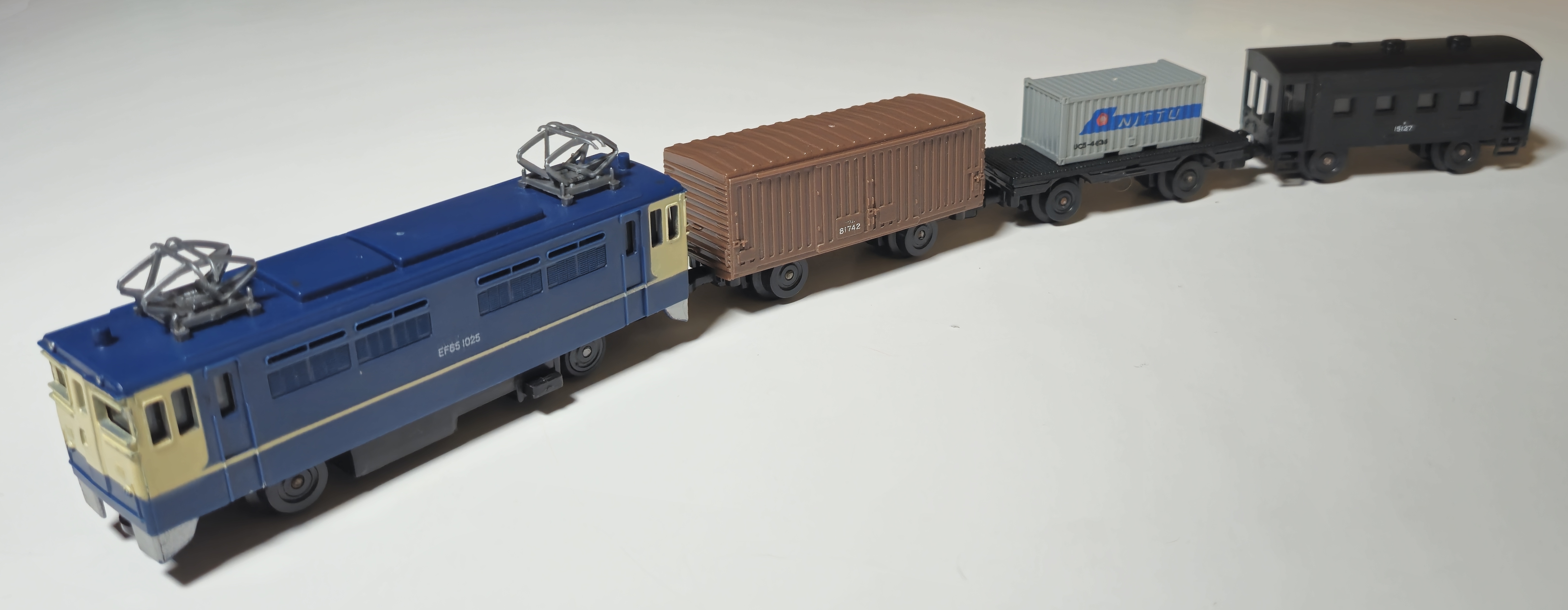
The EF-65-hauled freight train introduced at the end of the pre-Action Series lineup was updated to use the new reversing chassis and rereleased with the same WHAM, container car, and guard's van. This train was also included in the 1976 Action Serise No 3 EF65 Electric Locomotive Set.
EF-65 Passenger Train (1976)
The original Action Series EF-65 was also sold individually with two 10 series cars.
EF-71 Freight Train (1976)
An EF-71 recolor of the EF-65 tooling was released with a different freight train consisting of a white WHAM, yellow tanker, and Takara green guard's van. This train was rereleased in a set in the later 1970s AA-powered Action Series.
EF-71 Passenger Train (1976)
The EF-71 was also sold with two of the 10 series coaches in the early Action Series era. I am not sure if this one stayed in production later on...
485 Series Limited Express Train (1976)
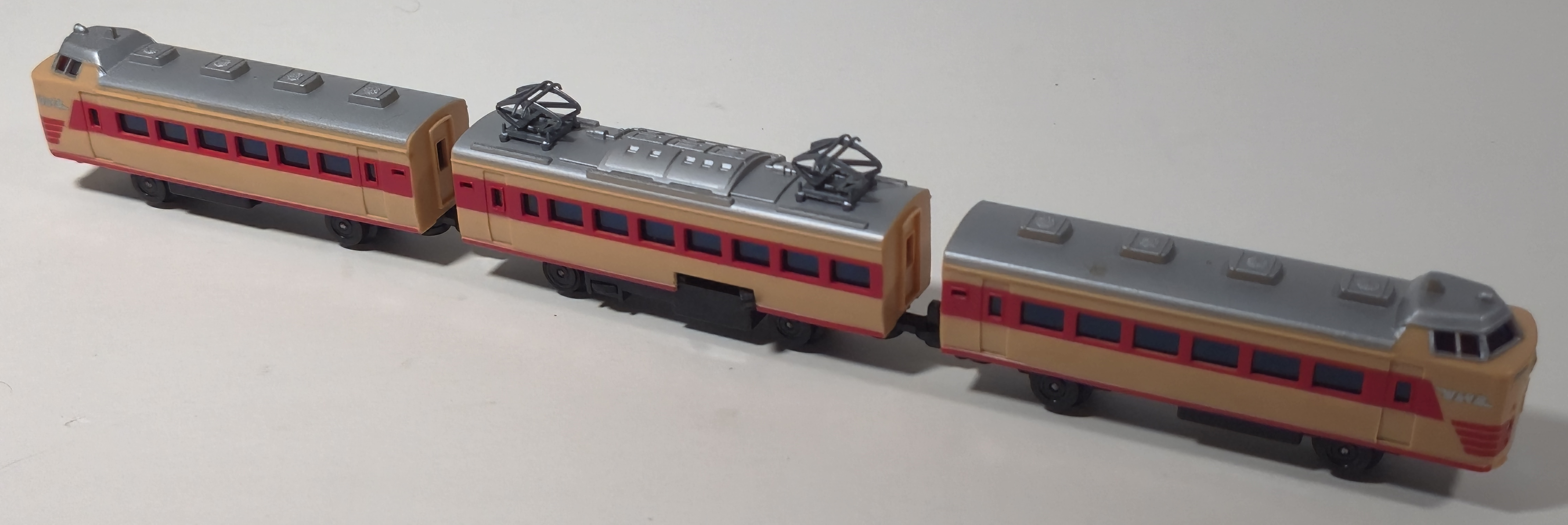
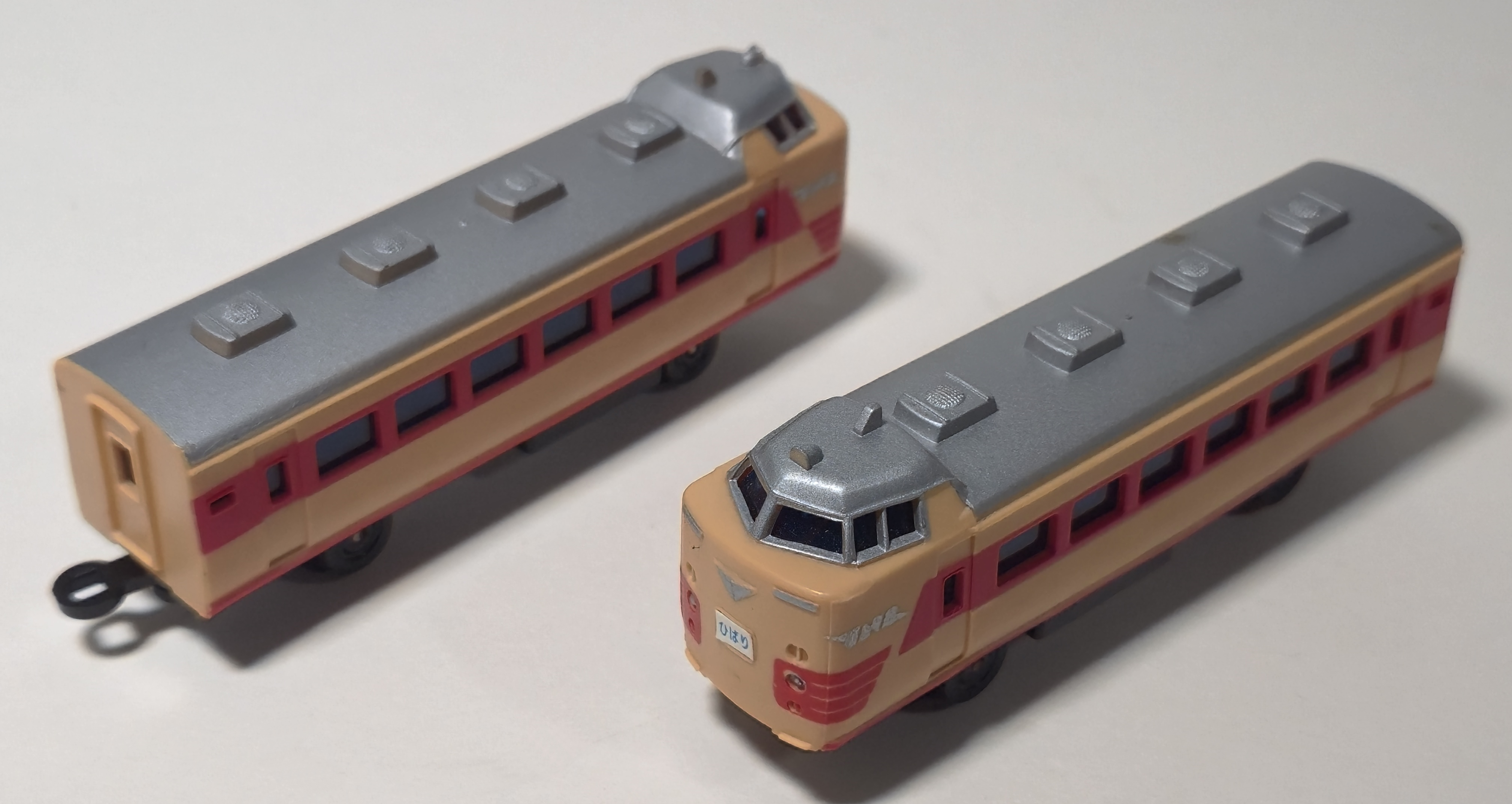
A new tooling for the early Action Series was the 485 series Limited Express train. The circa 1976 green card release has the power chassis in the middle car while the ~1977 orange card release of this train has the power car in the front. The limited express train I have from a 1977 copy of the Action Serise No 2 Limited Express Set still has the power car in the intermediate car like the early individual release.
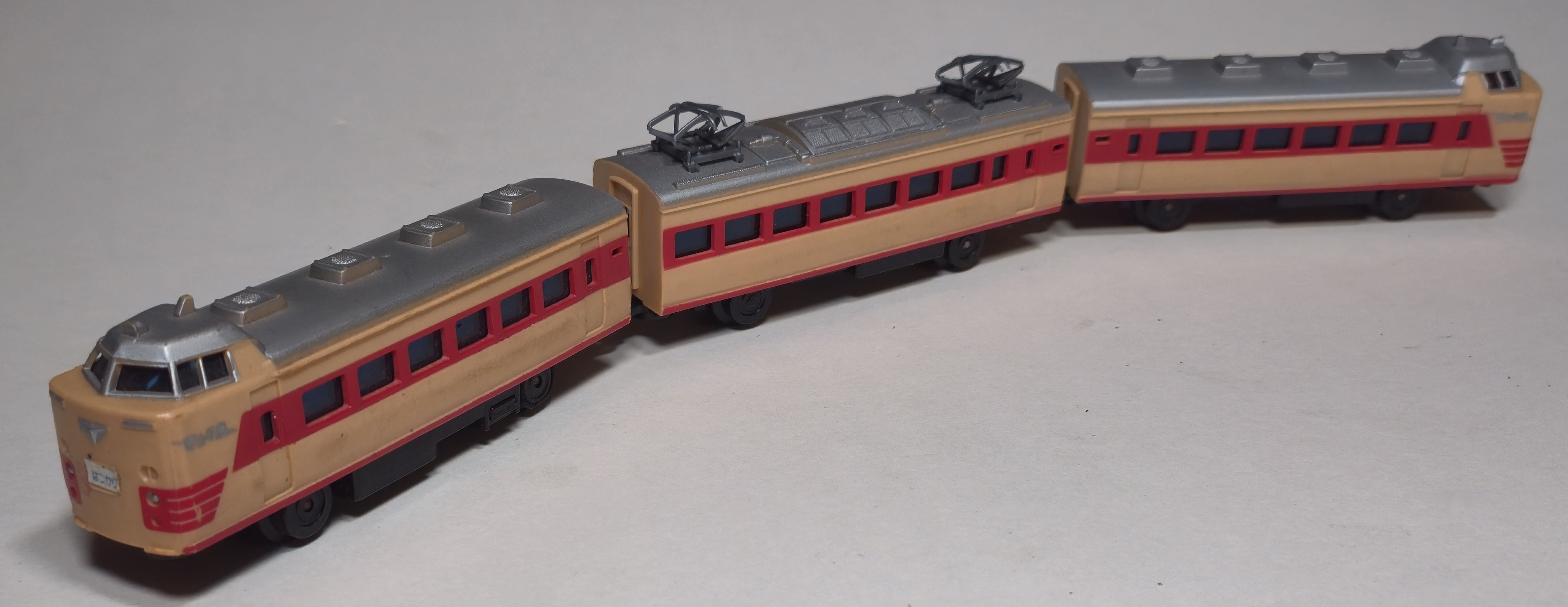
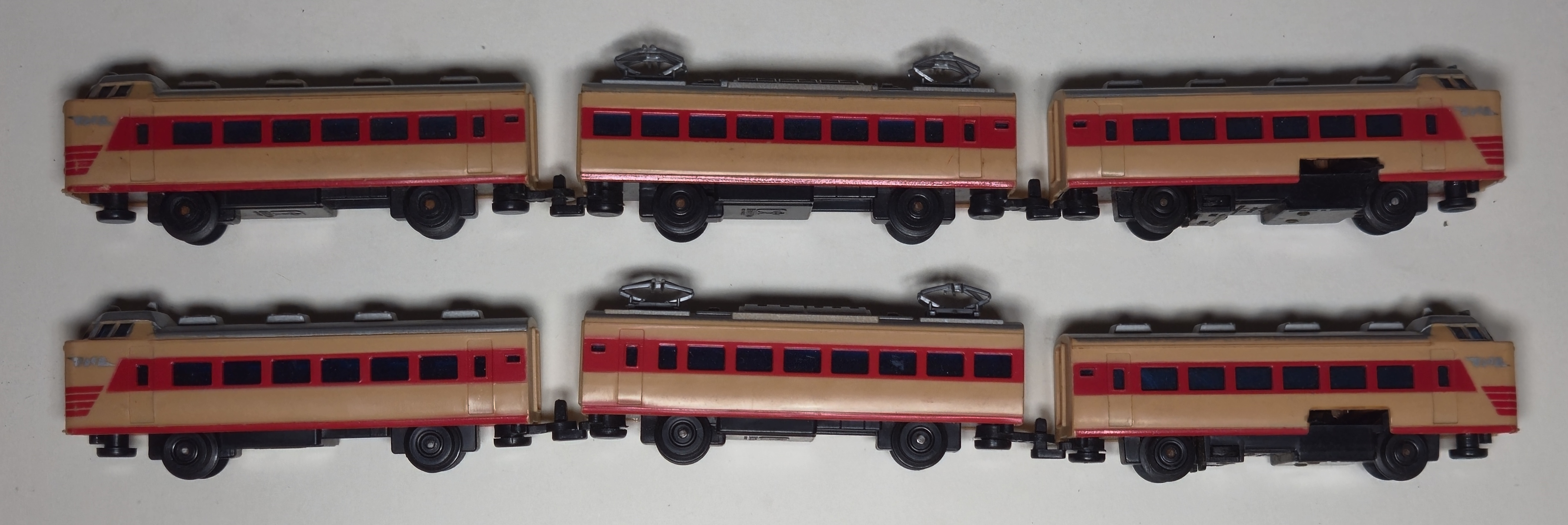
I also have two orange card-style front car powered Limited Express trains.
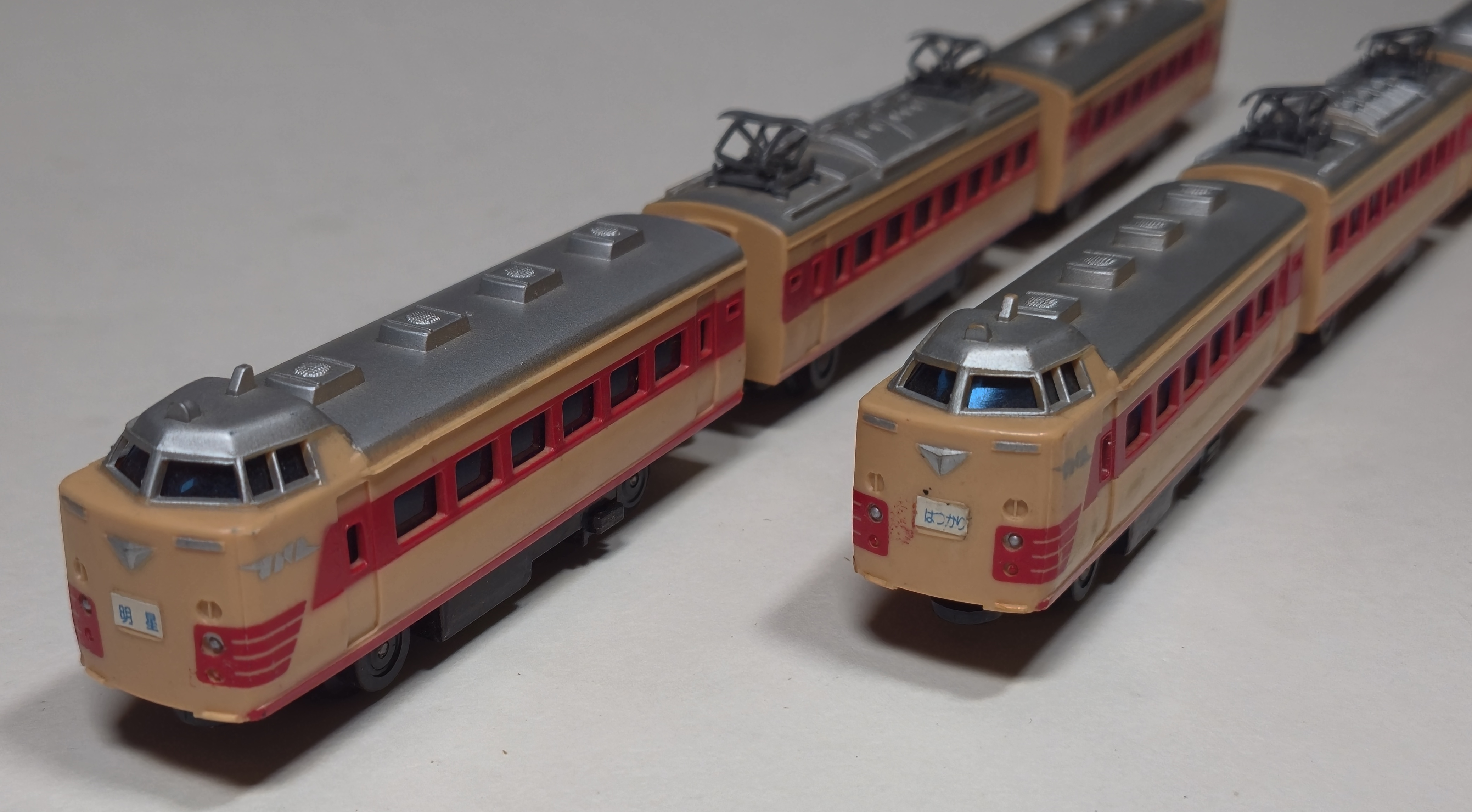
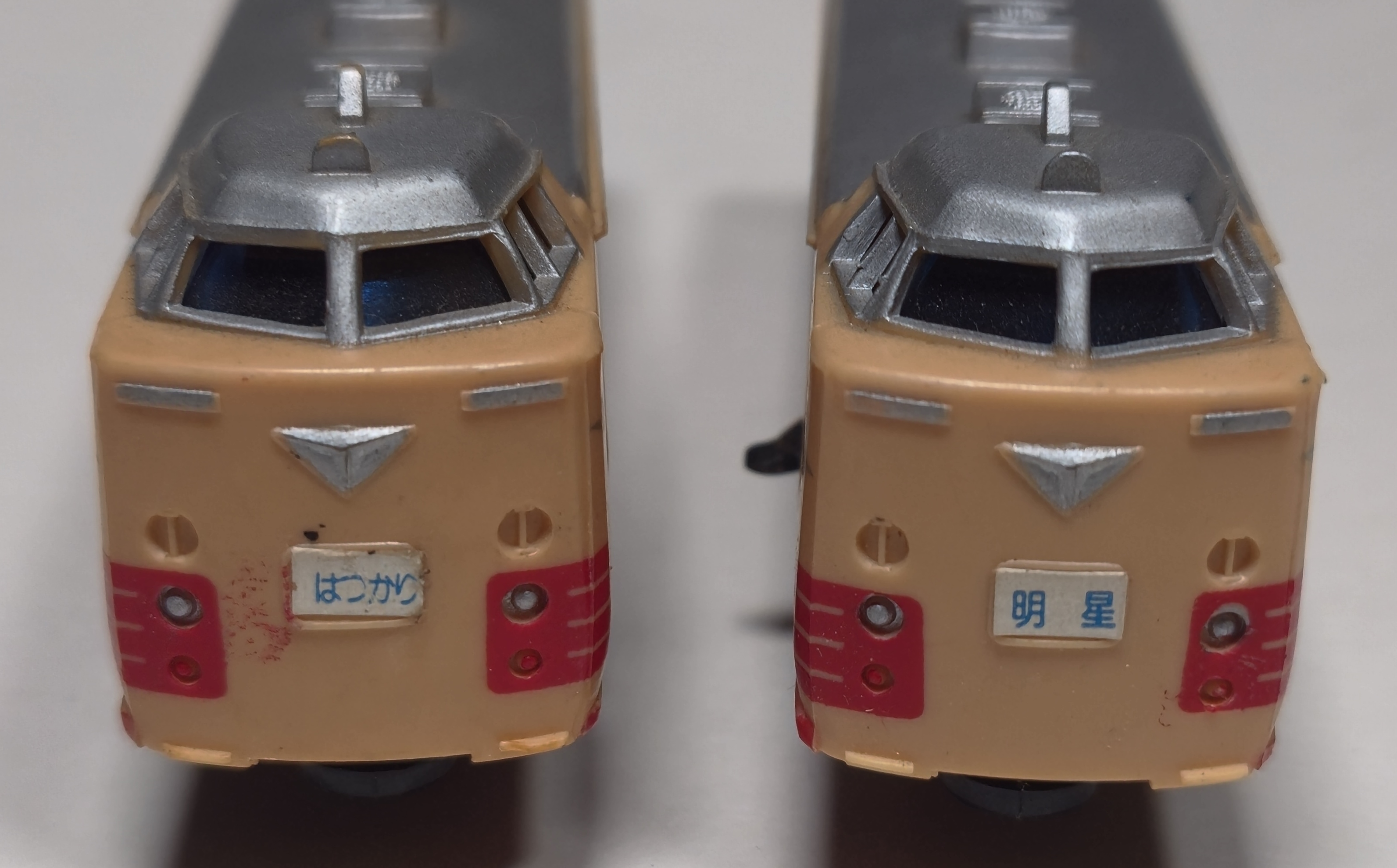
During this era these trains and a few others began to include headmark stickers - the intermediate-car-powered train above has ひばり Hibari stickers, and these two have はつかり Hatsukari and 明星 Myojo, which I think is actually from the Sleeper Express headmark sticker sheet...
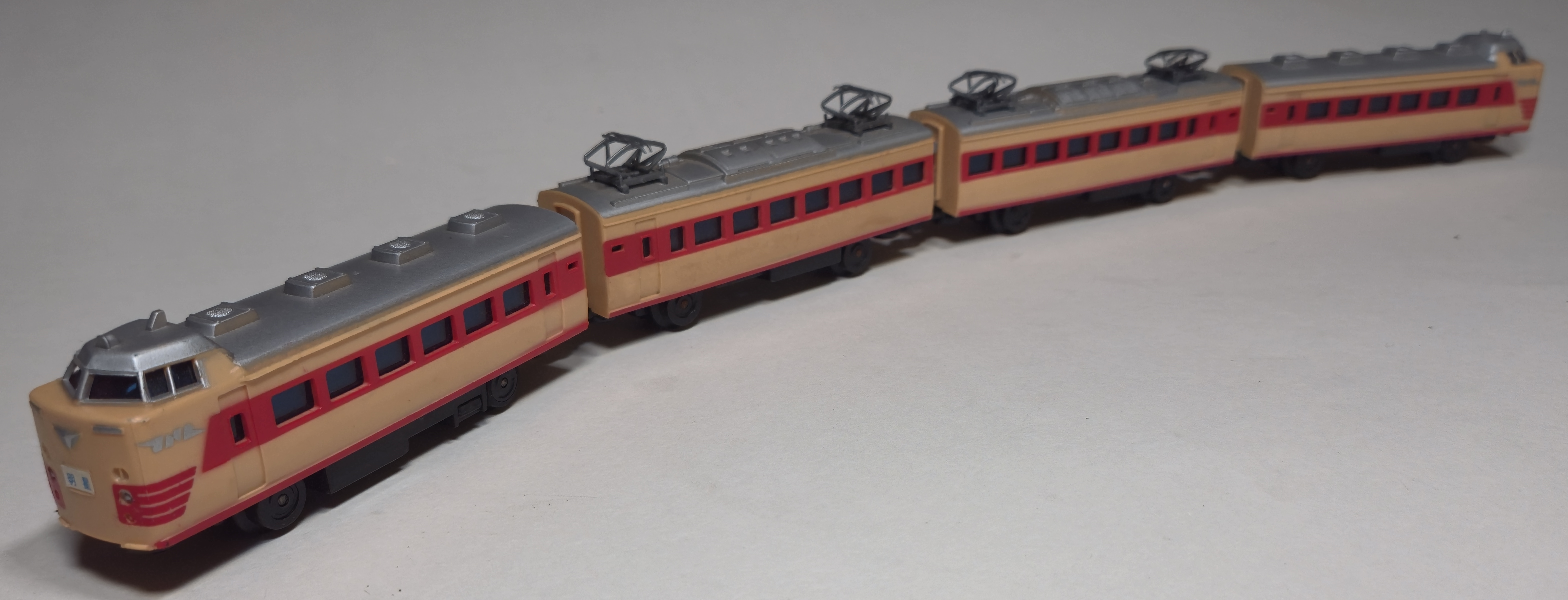
Because the middle cars are unpowered in these trains, multiple can be connected together - actually, the even better configuration is to use the unpowered front and rear cars from the earlier trains with the powered intermediate car in the middle of the two unpowered ones, and make a five-car train with motor in the middle to make the load more equal in either direction.
583 Series Sleeper Express Train (1976)

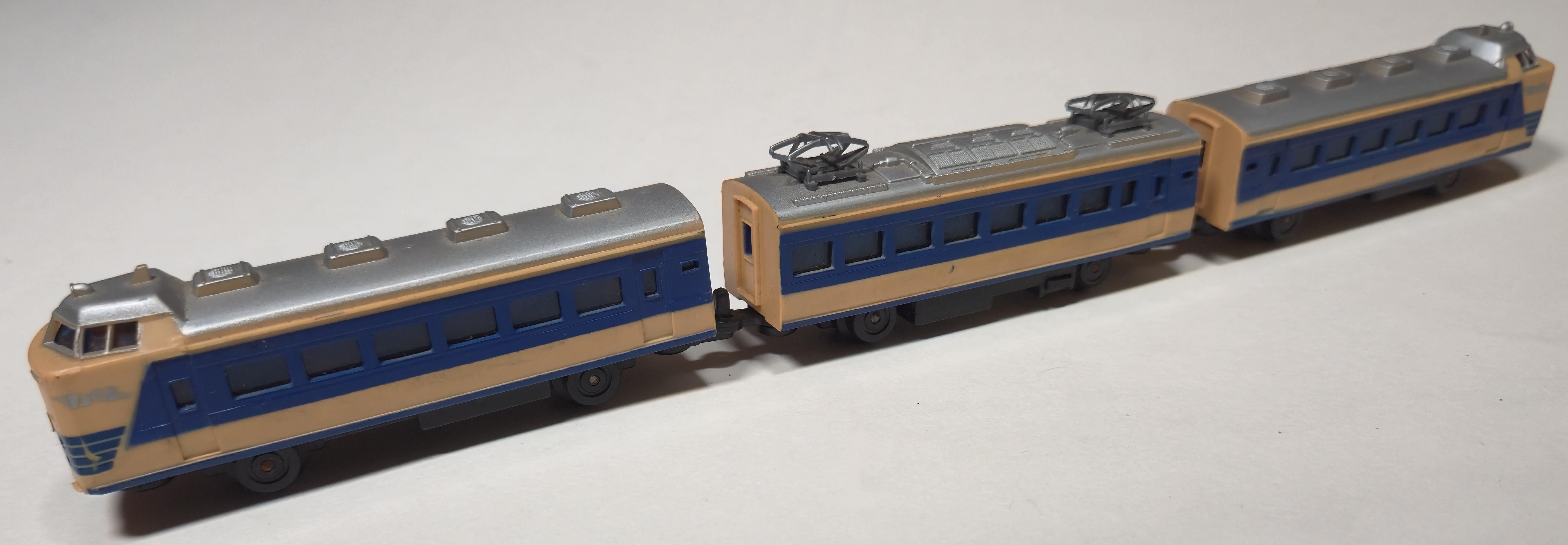
Sharing the new express train tooling with the 485 series was the Sleeper Express, a popular 1970s train that is sought after in many toy ranges.
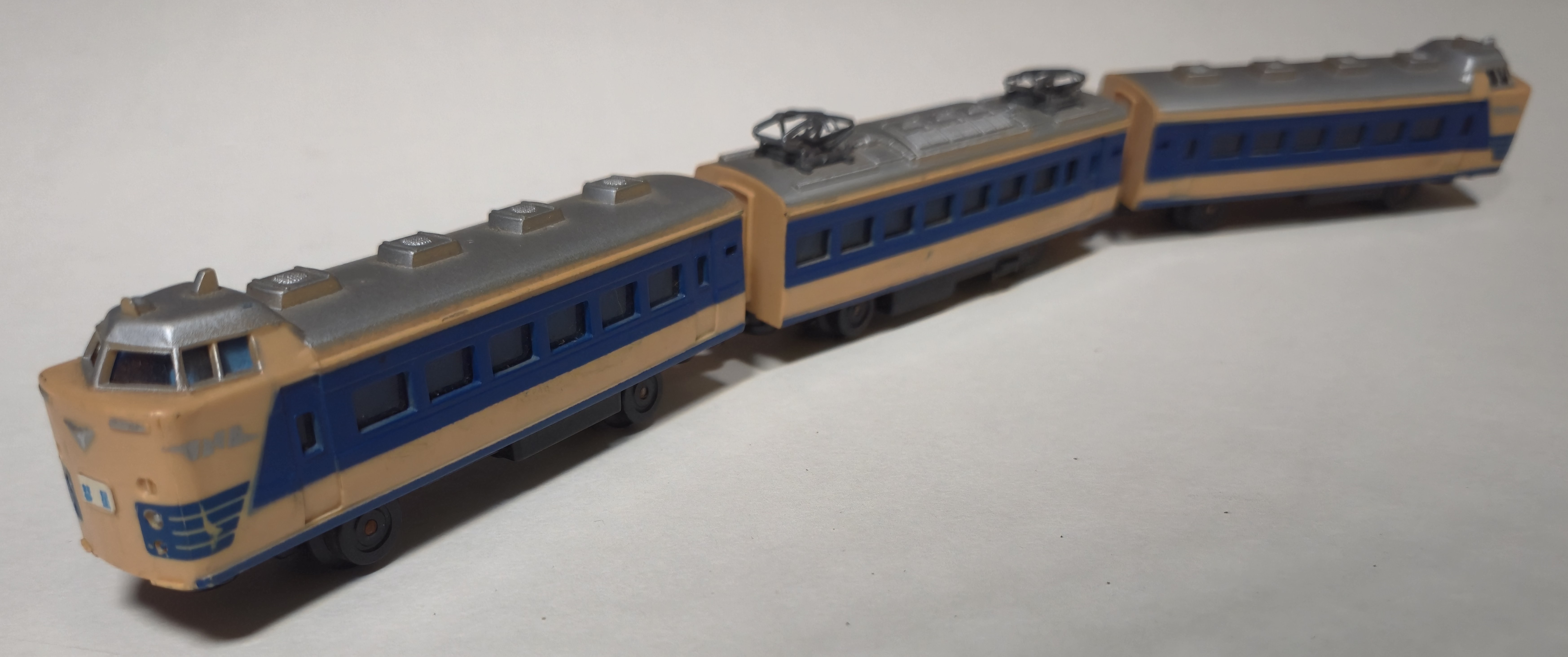
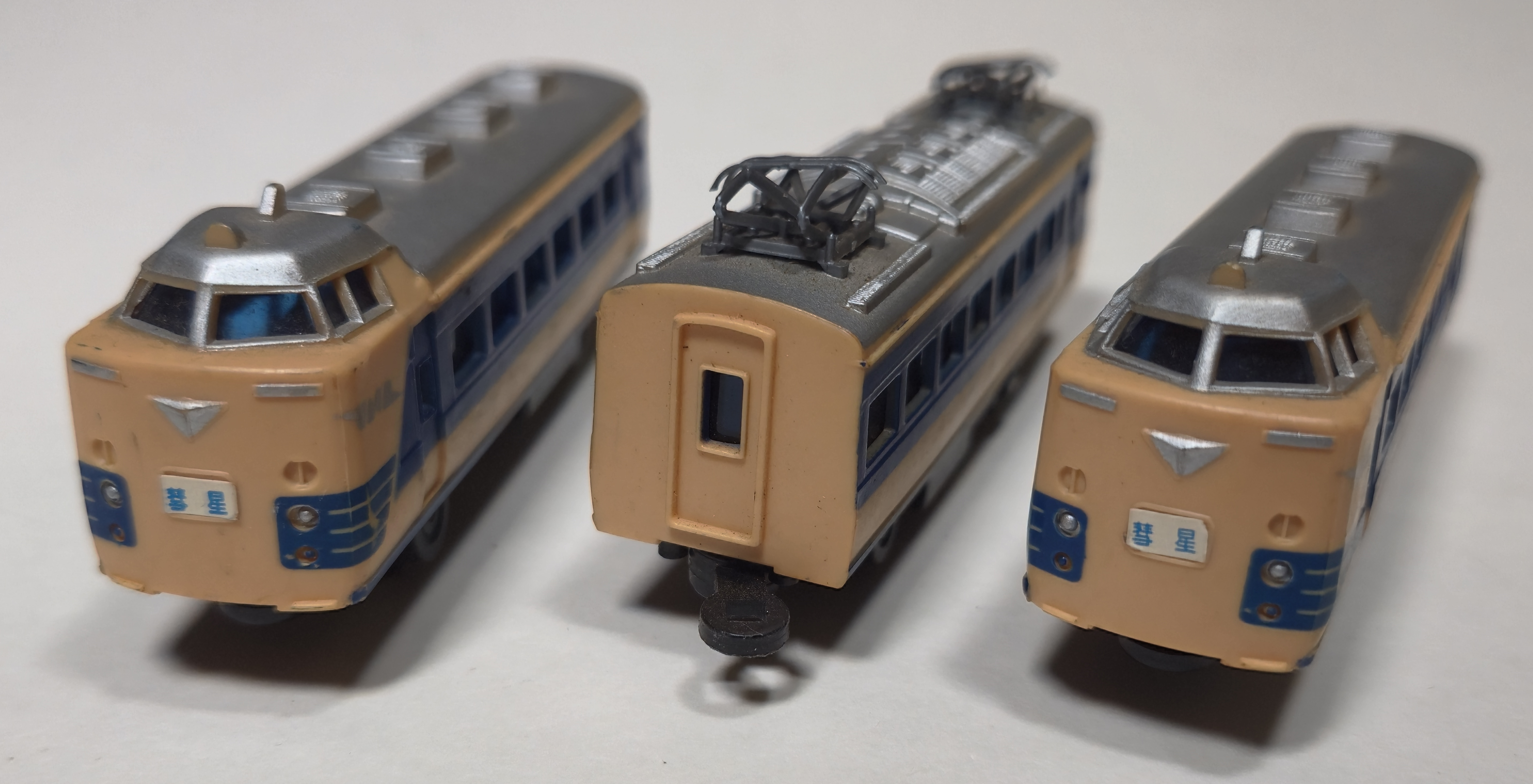
This early Action Series train has the power chassis in the intermediate car. This one has had 彗星 or "Comet" headmark stickers applied, the name of the sleeper express service between Shin-Osaka and Miyazaki.
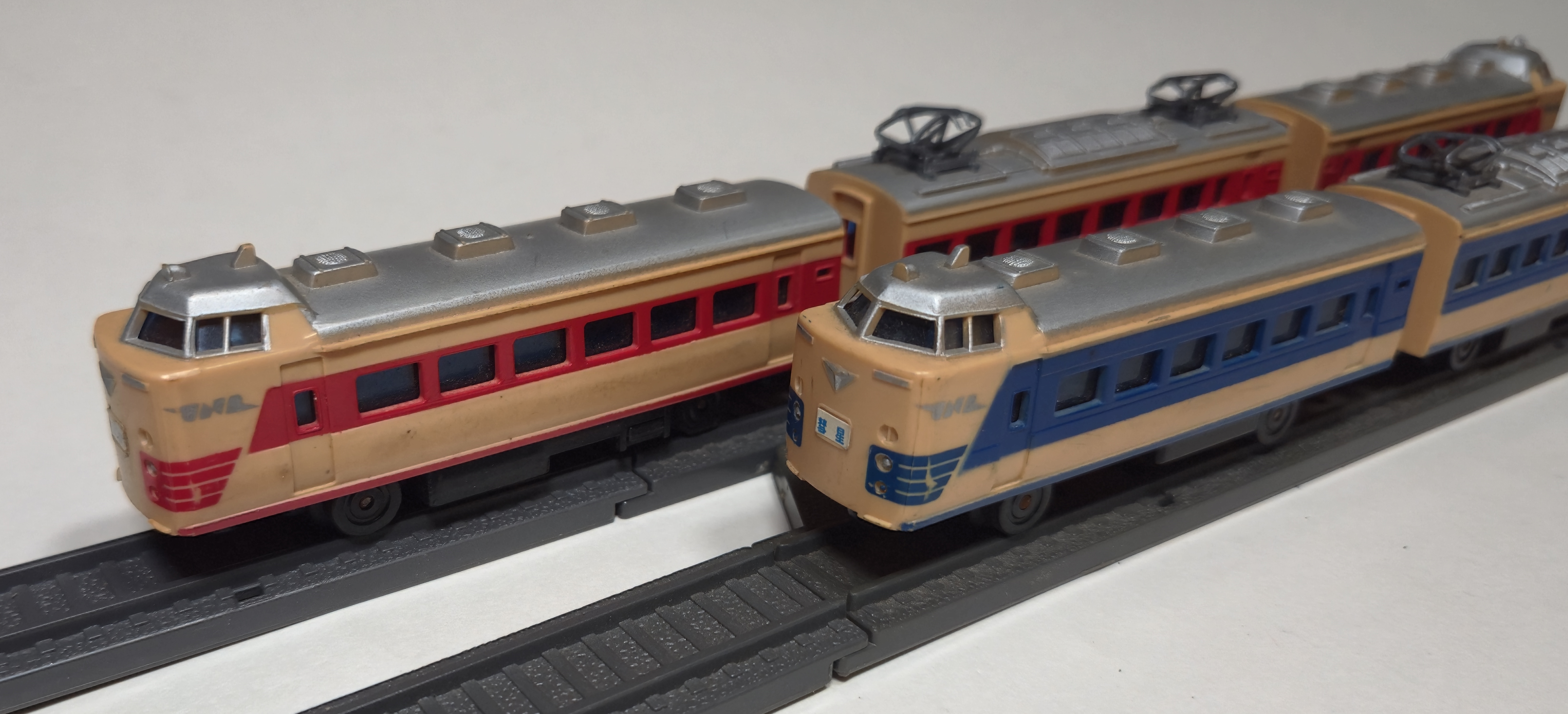
Later Action Series Mini Mini Rail trains (1978-1985)
A new reversing chassis that used the more common AA battery was designed for the later Action Series that began around 1978 or so. This chassis was used for all later Mini Mini Rail trains through the end of the range in the 1980s. The reversing switch was moved to sit in the center of the chassis and the power switch is now towards the front. Later Action Series trains that were not hauled by a locomotive had the power chassis installed in the middle car, so it was equally pulling and pushing the train in either direction - locomotive-headed sets often have a harder time reversing and pushing the train back up the track.
Hikari Shinkansen (1978)
The new AA-powered Hikari has the power chassis in the intermediate car which also had a pantograph added to the roof.
Blue Train (1978)
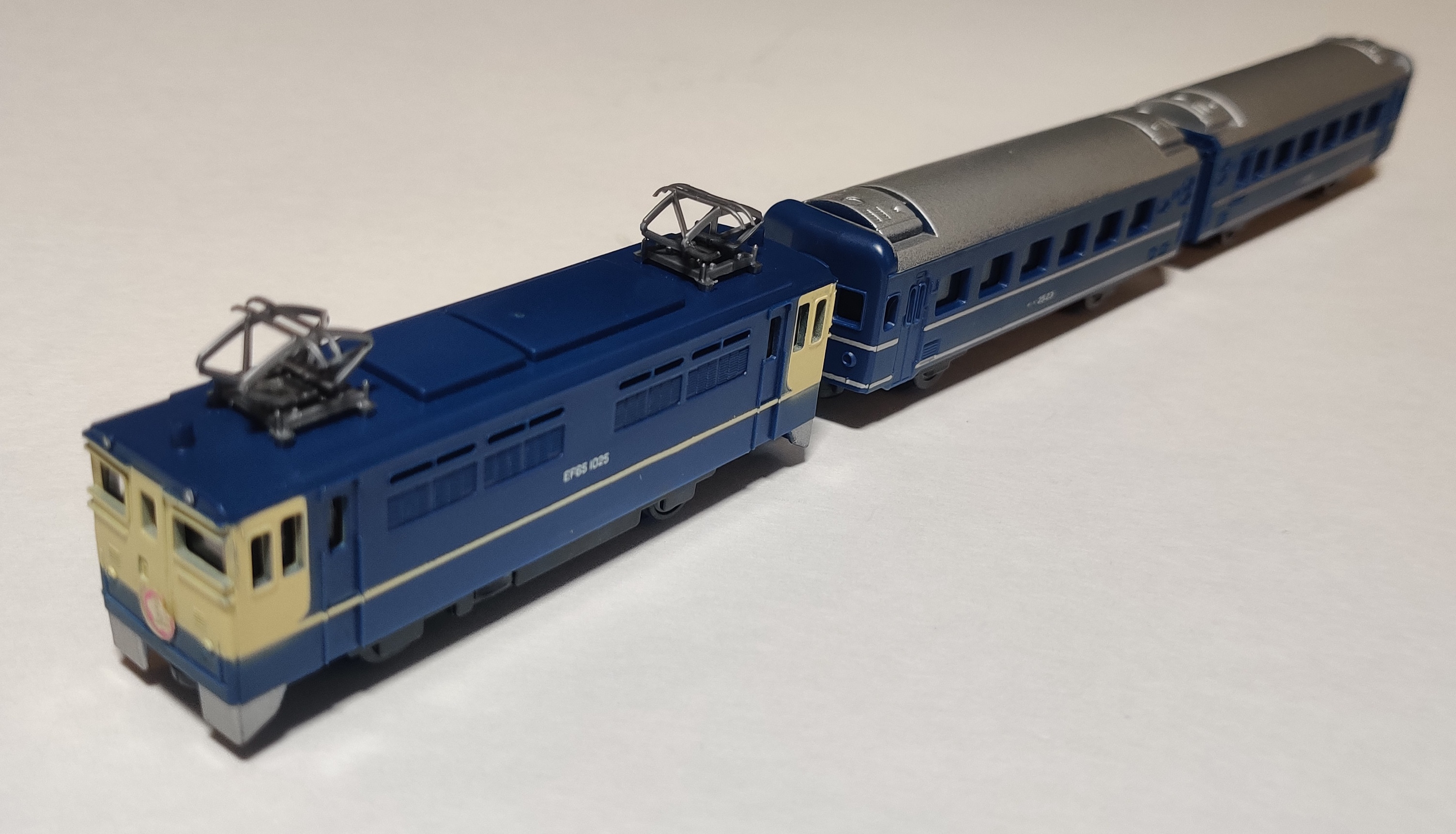
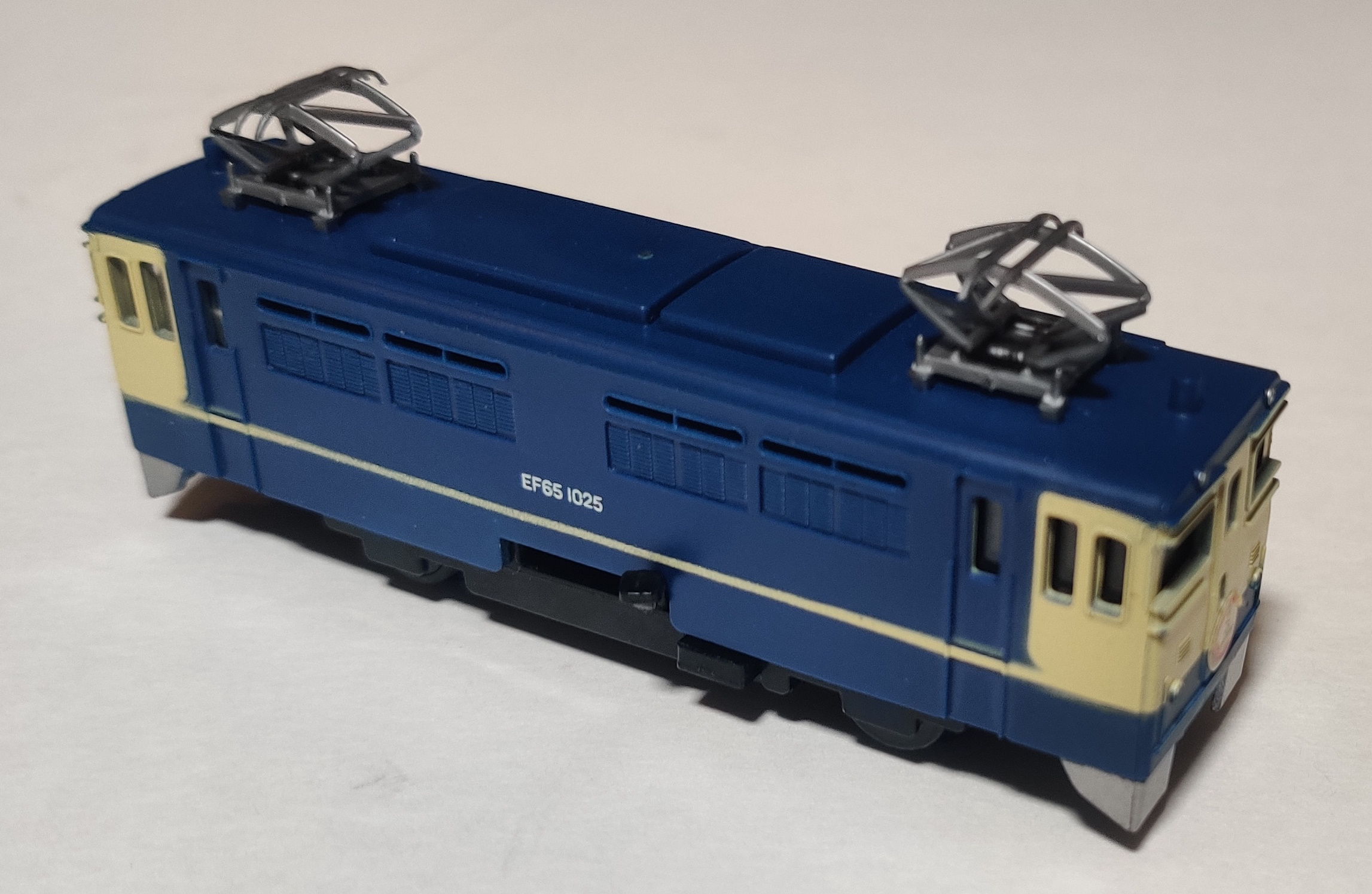
The new EF-65 was released with headmark stickers and Blue Train 24 series passenger cars as the Blue Train in the later Action Series era. It was sold individually and in the Action Series No. 2 Blue Train Set amongst others.
EF-71 Freight Train (1978)
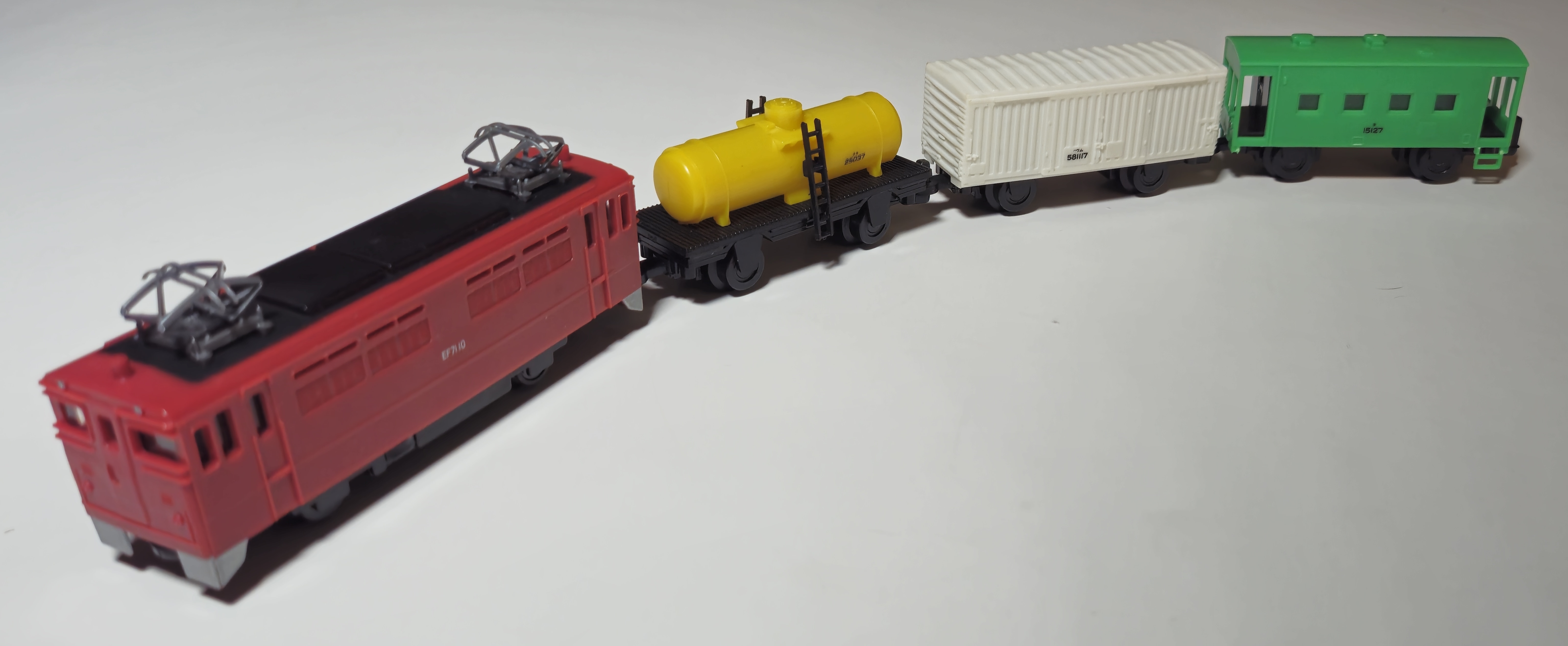
New-chassis red EF-71 with white WHAM box car, yellow tanker, and Takara green guard's van. This train was sold individually and in the Action Series No. 3 EF71 Electric Locomotive Horn Set.
485 Series Limited Express Train (1978)
The 485 series Limited Express appeared in the later Action Series, now with running numbers on the sides of the cars.
583 Series Sleeper Express Train (1978)
The Sleeper Express was also released with headmark stickers in the later Action Series era, also now sporting car numbers.
C-62 Steam Locomotive (1978)
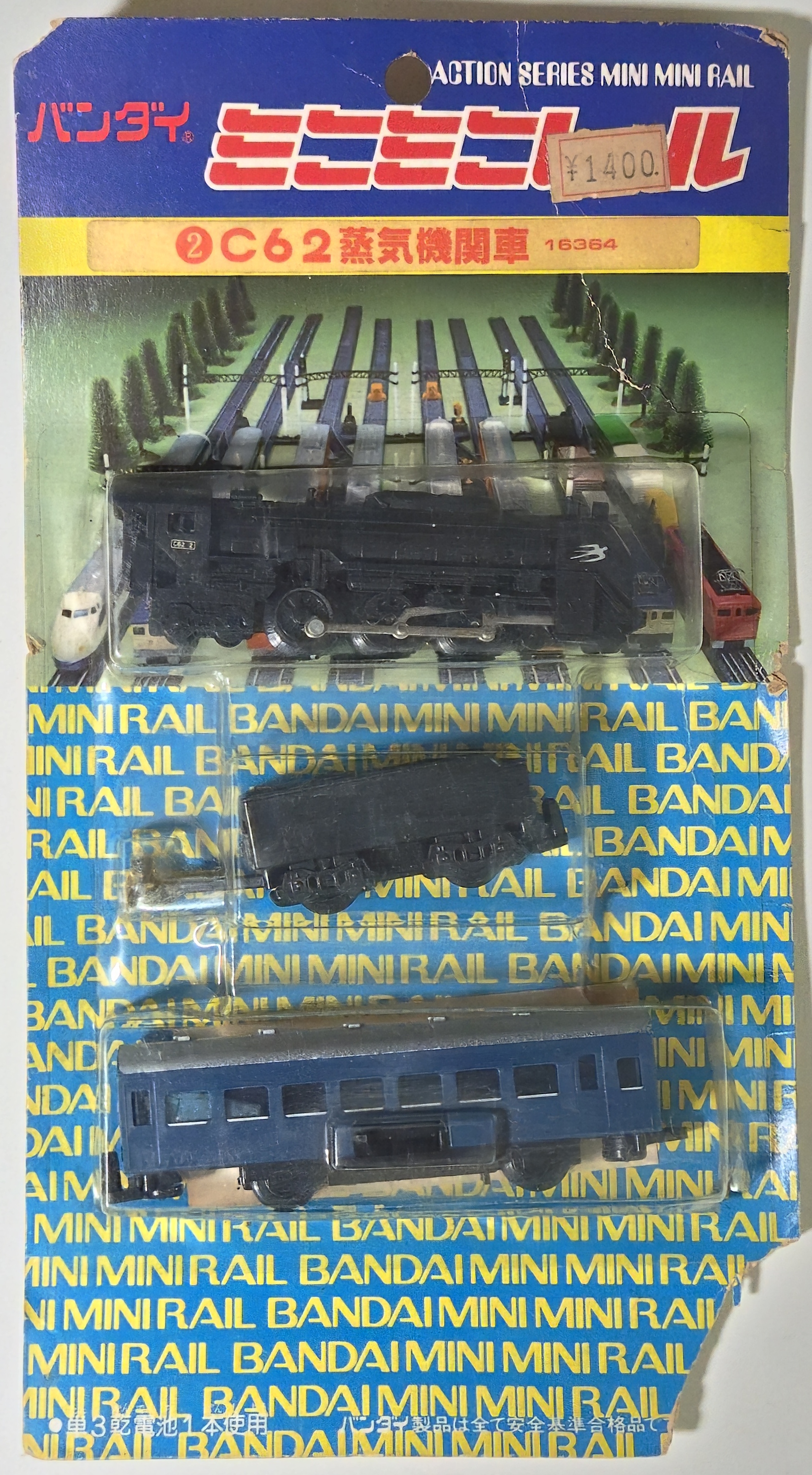
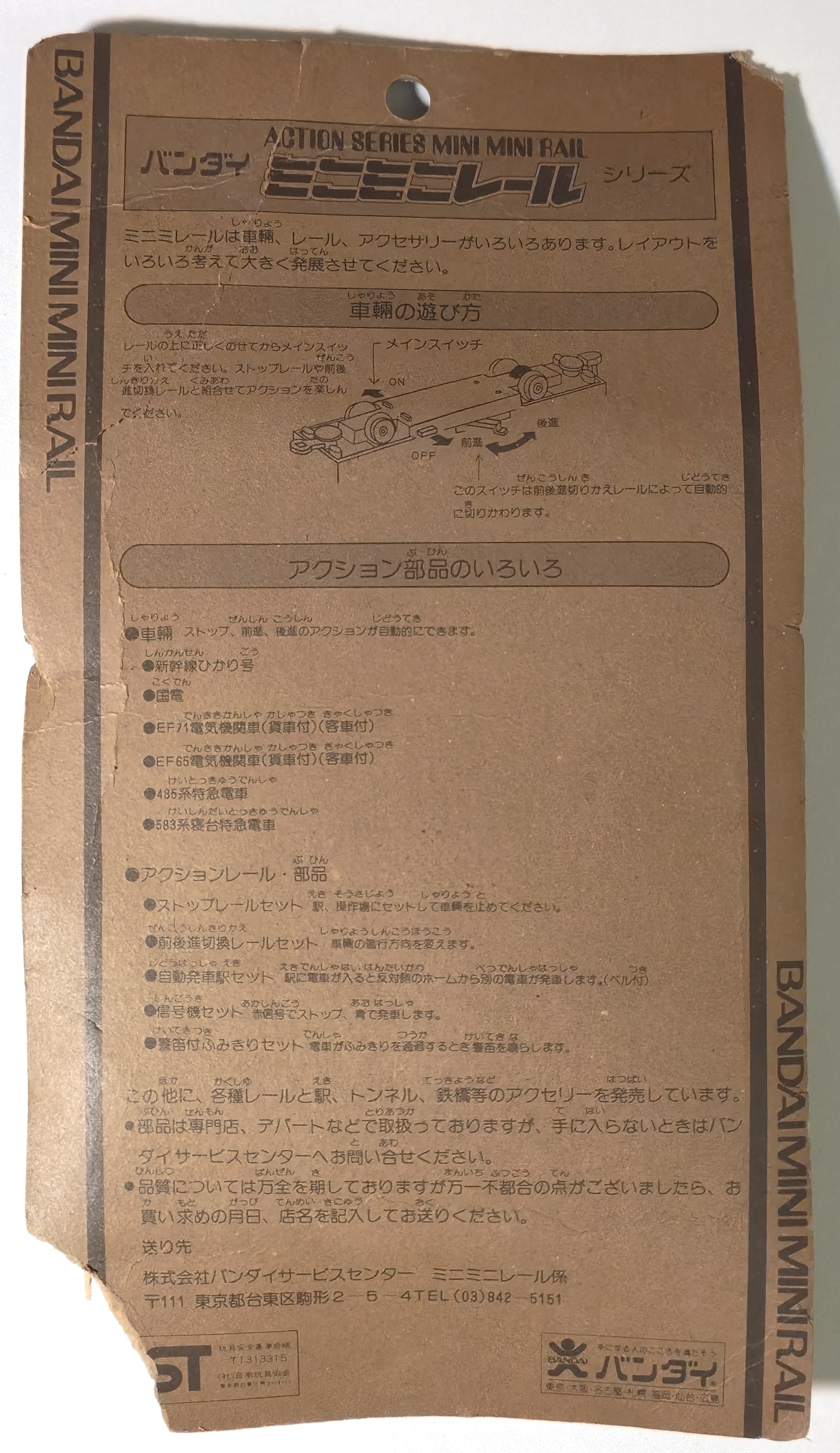
One of the new releases at the beginning of the later Action Series was the new C-62 Steam Locomotive to replace the forwards-only D-51. It is unit C62 2 and bears the Tsubame Swallow mark on its smoke deflectors. The locomotive uses a new unpowered chassis, with the powered reversing mechanism in the passenger car. This one is new on a rather tattered card and has the included sticker sheet. This train was also sold in a No. 1 oval set.
Tohoku Joetsu Shinkansen (1981)
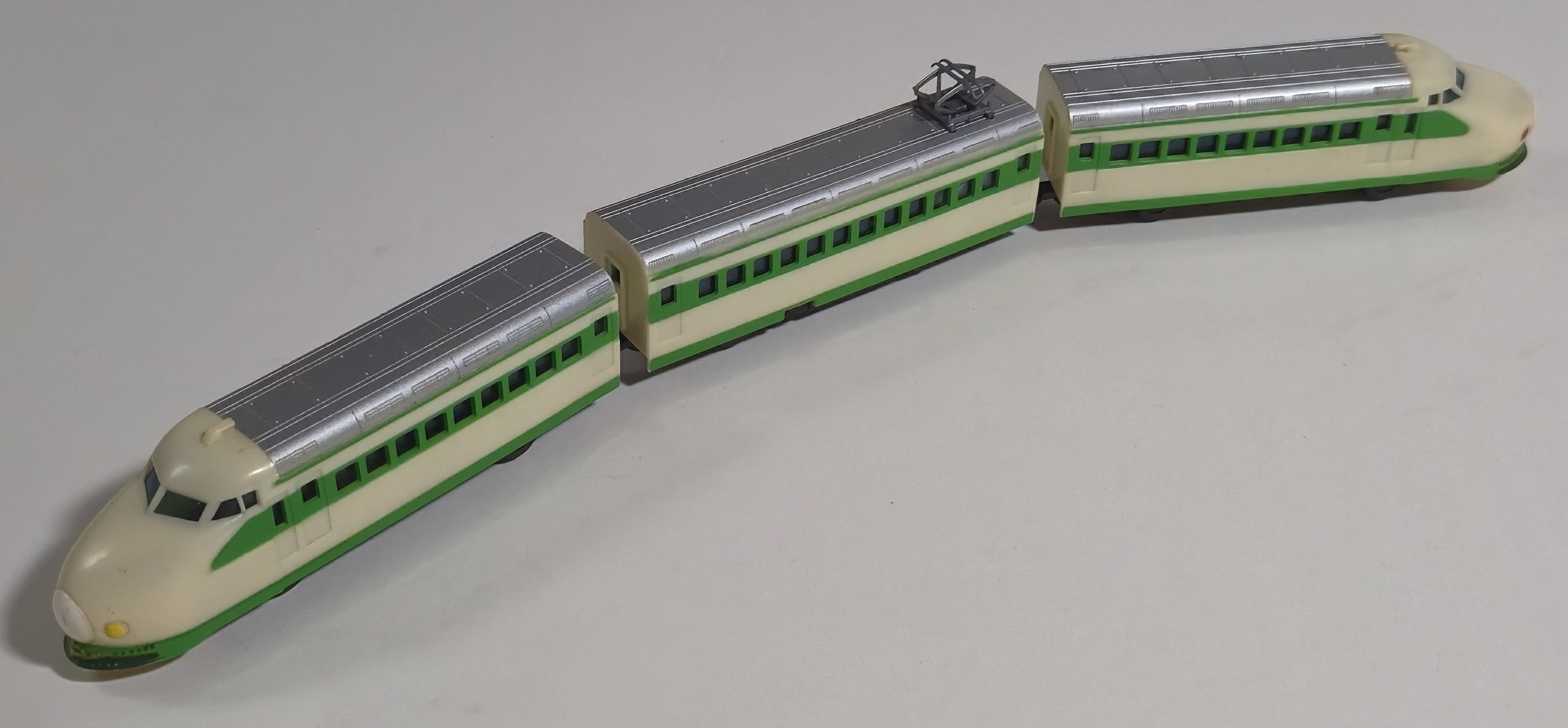

In 1981 ahead of the opening of the Tohoku Joetsu Shinkansen line the 200 series Shinkansen based on the 0 series Hikari was released. It uses the same tooling as the later Hikaris and is thus powered by the intermediate car. In addition to being green, of course, the snowplows are represented by stickers. It was sold in several sets including the Action Series Tohoku Joetsu Shinkansen Set.
I do have two of these trains, but one is missing the powered chassis in the intermediate car... I suppose if I borrowed an unpowered chassis of the "regular" type from another train I could run a four-car train.
In the later Action Series era many new trains like the Skyliner, Red Arrow, orange TGV, and a white Tobu Railway commuter train with new end tooling on the old 103 series train were released. Most of these releases are fairly hard to find, unfortunately...